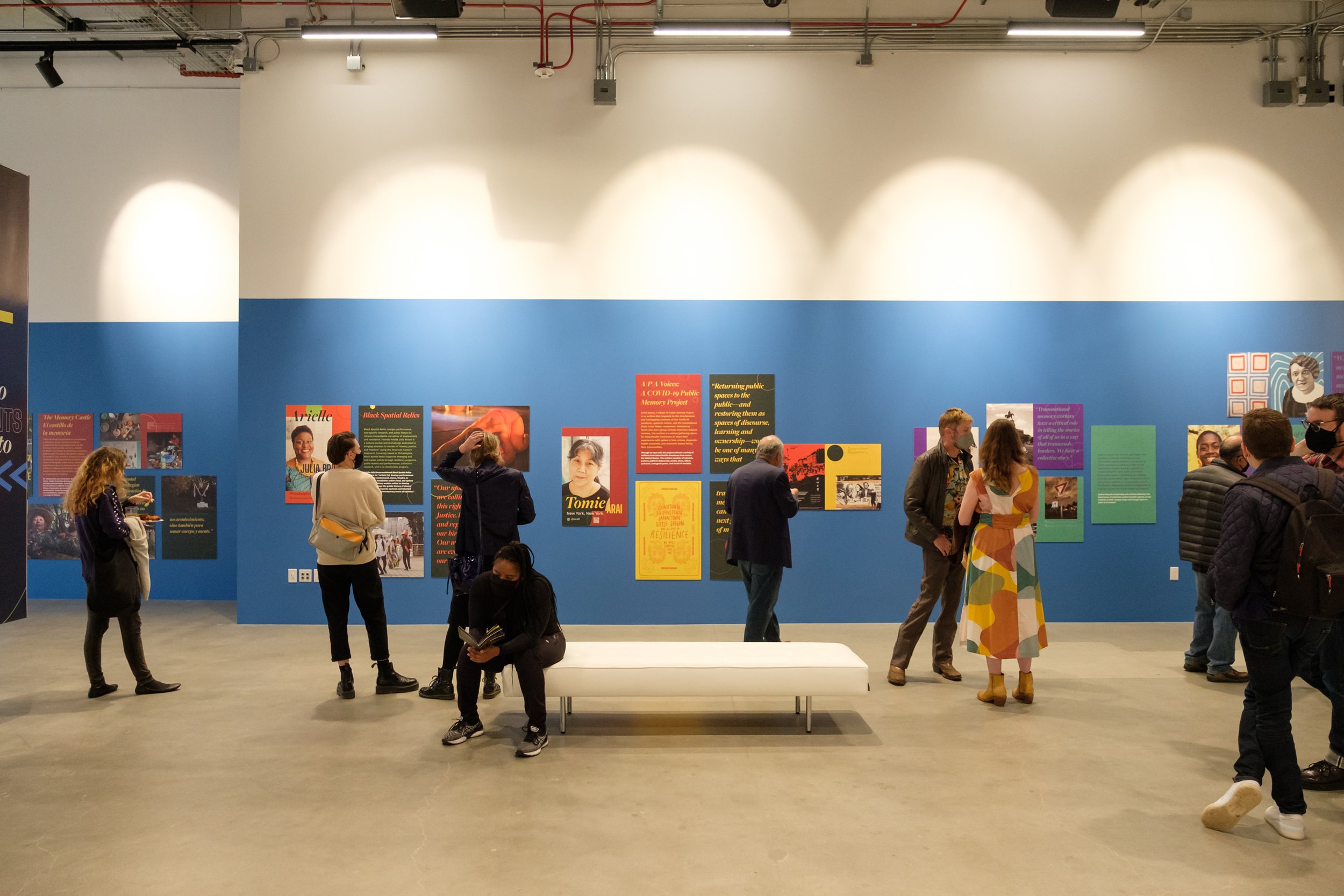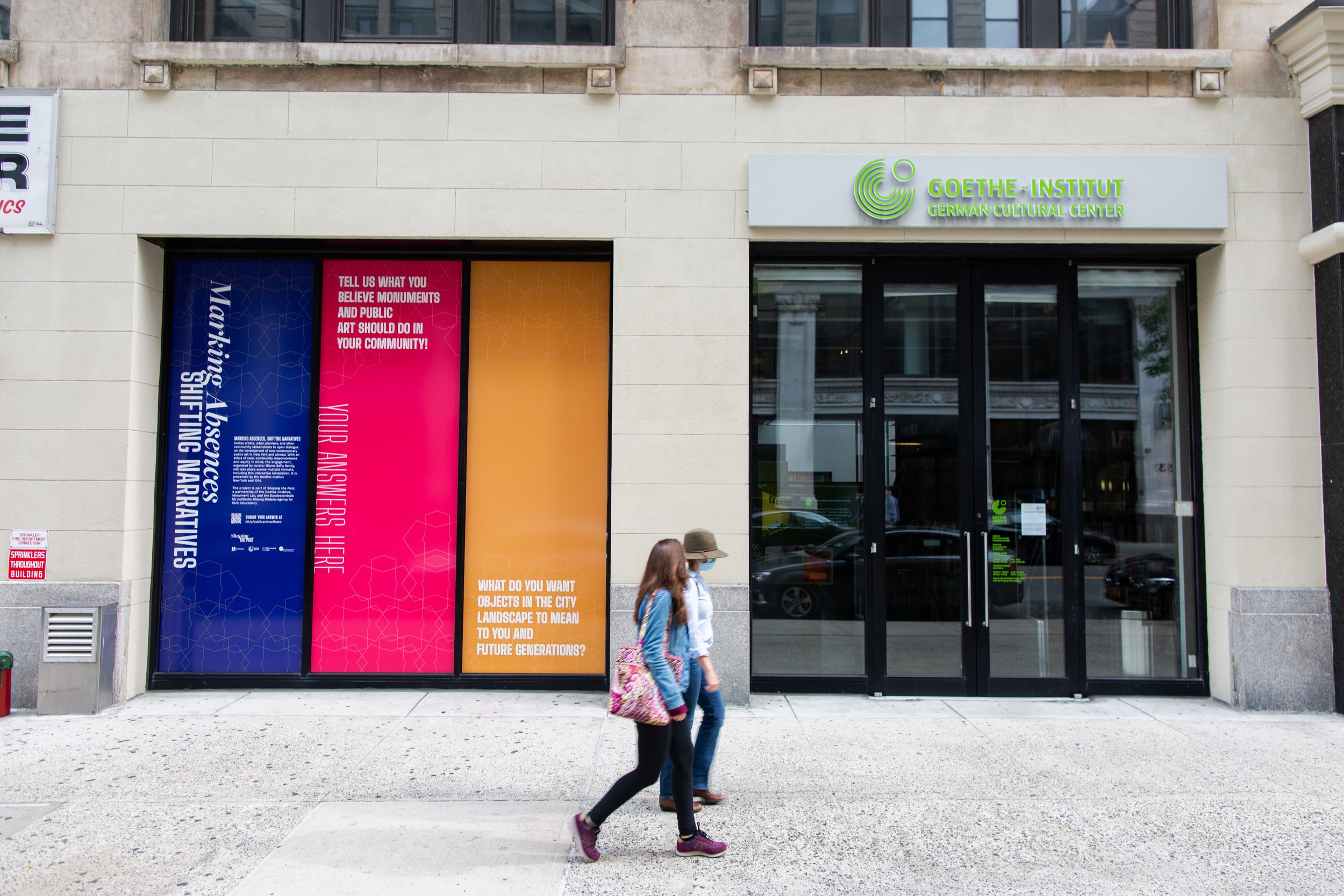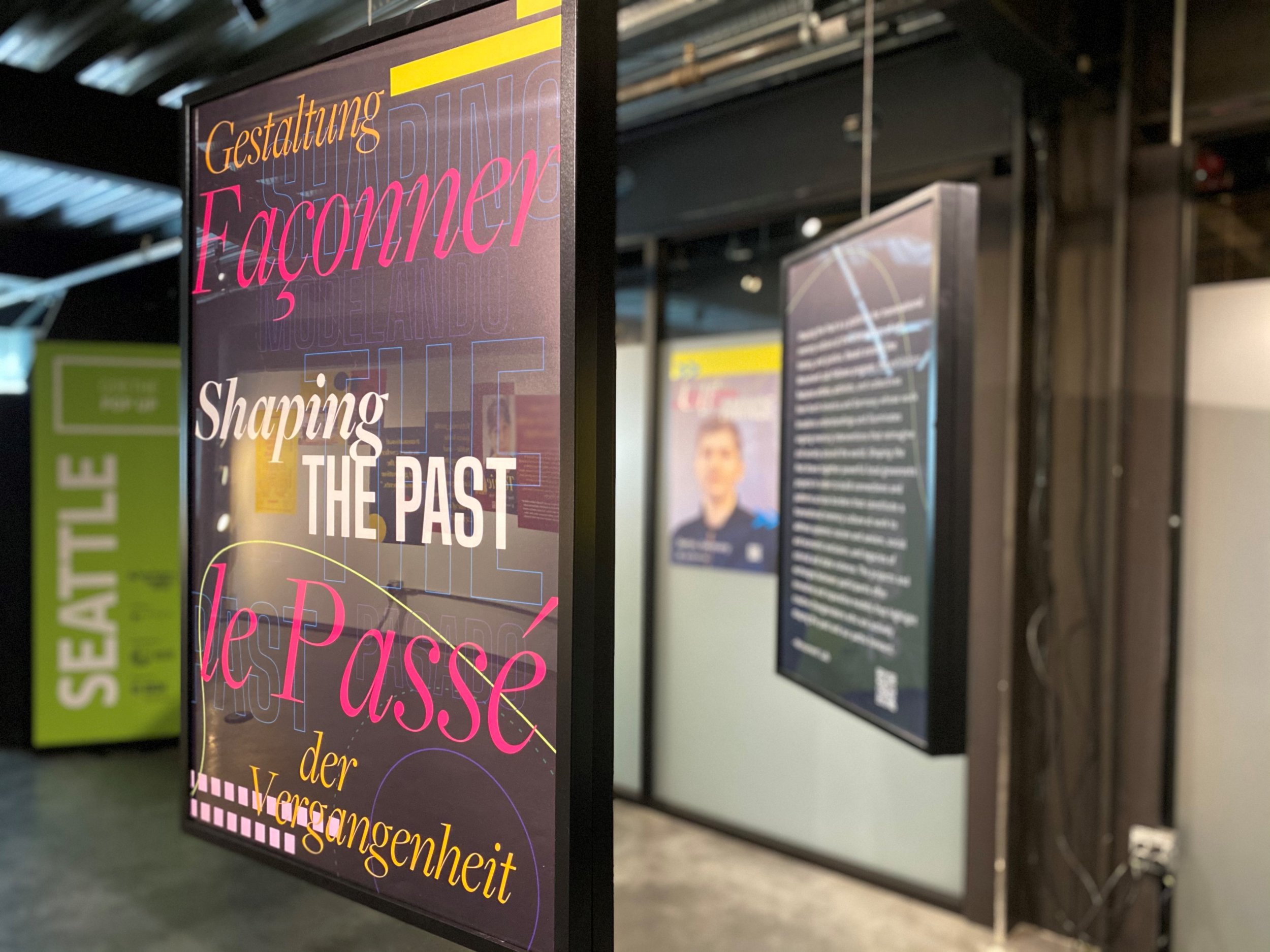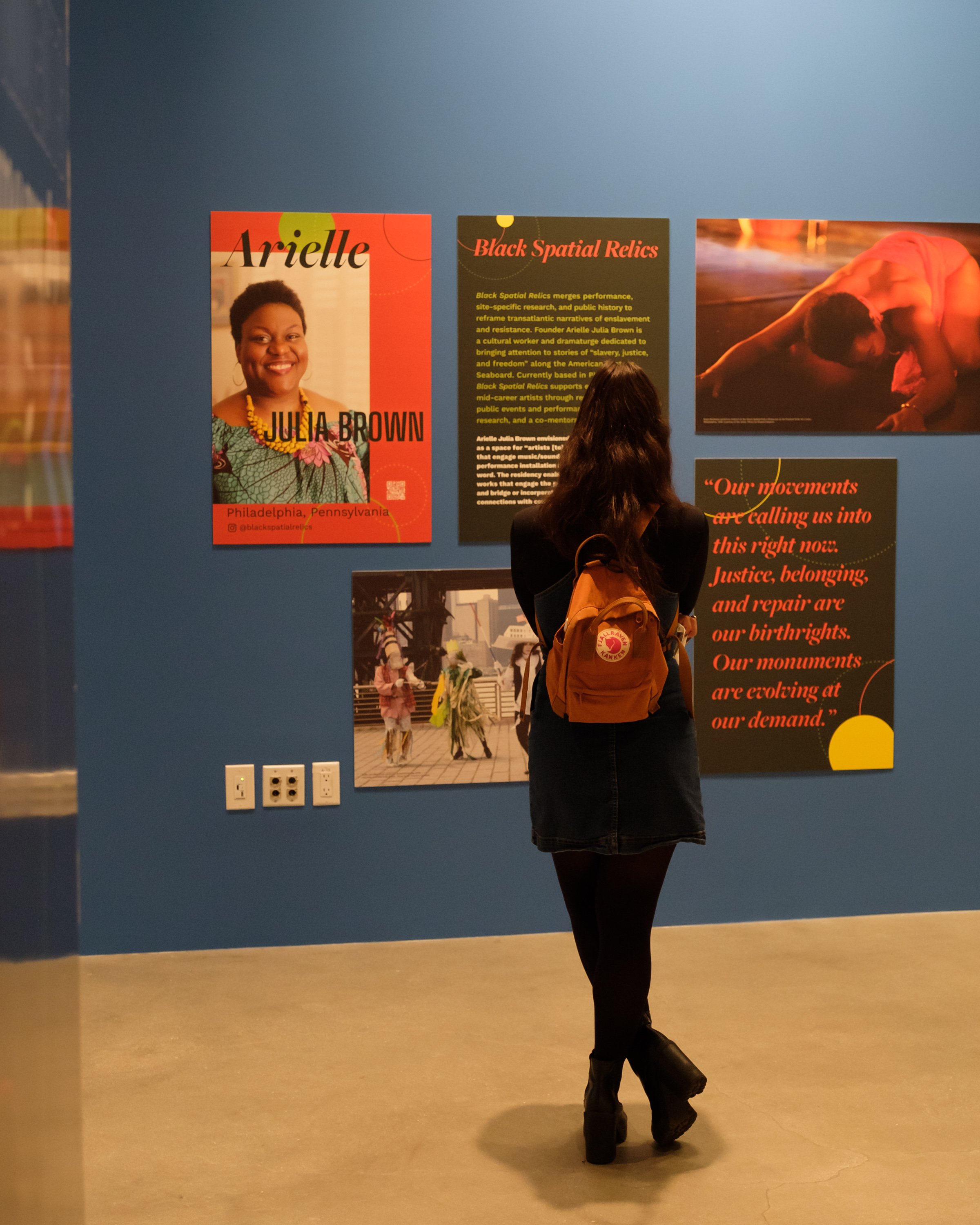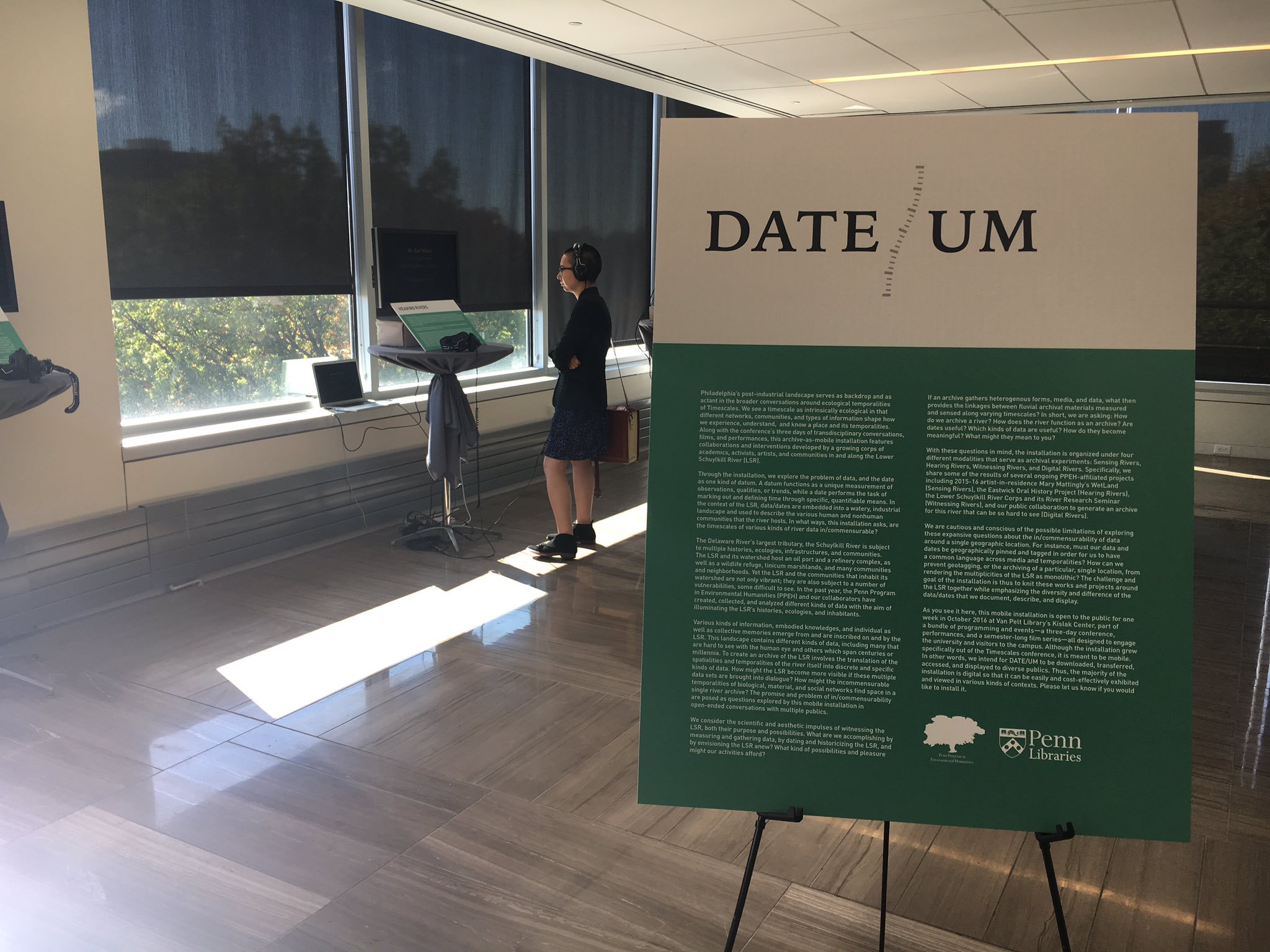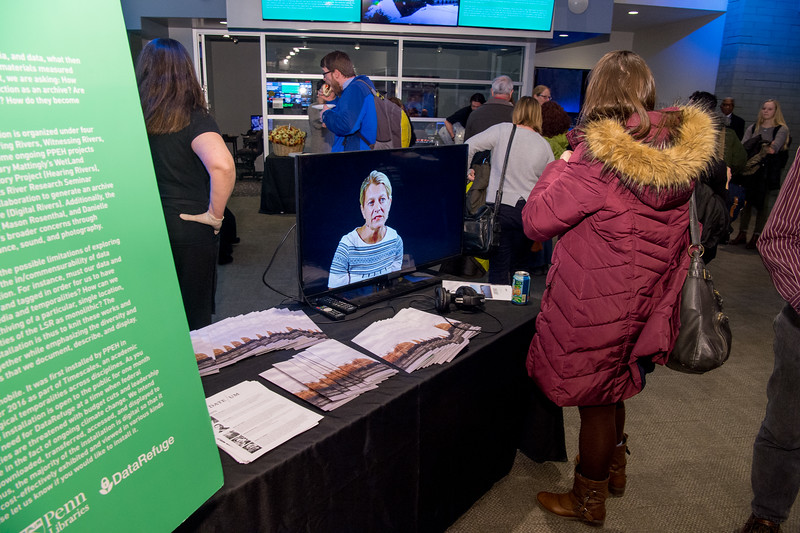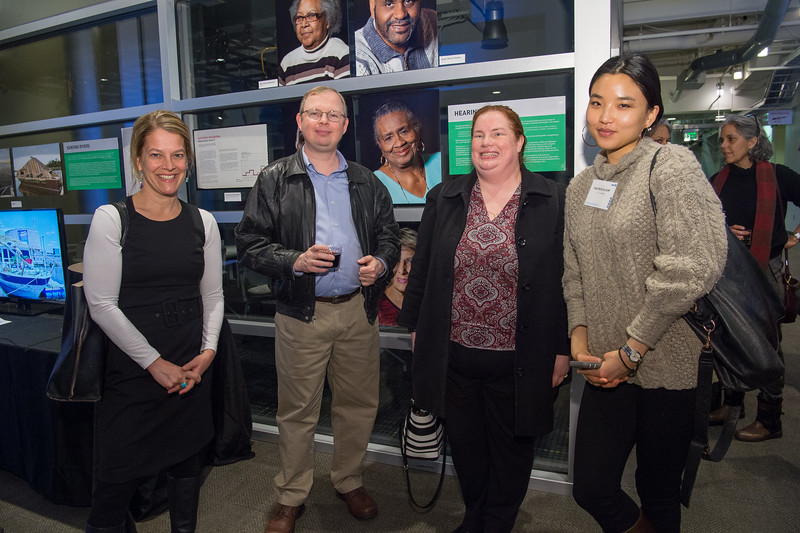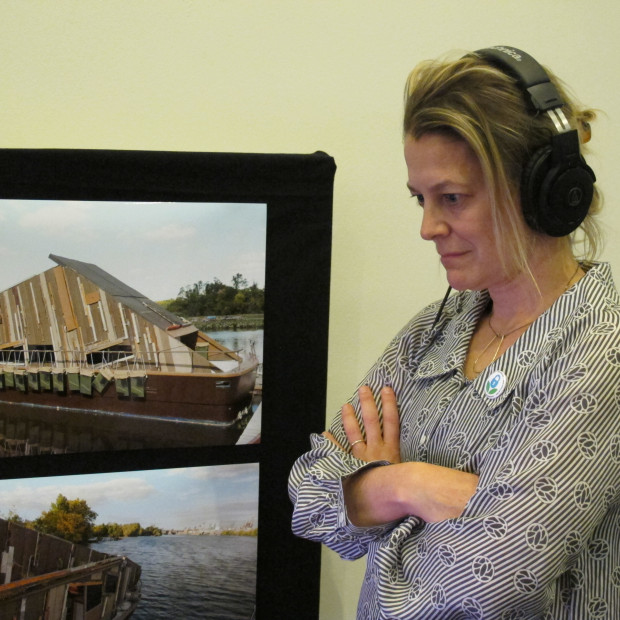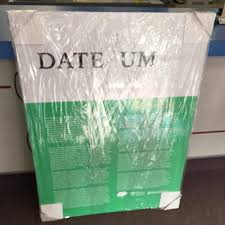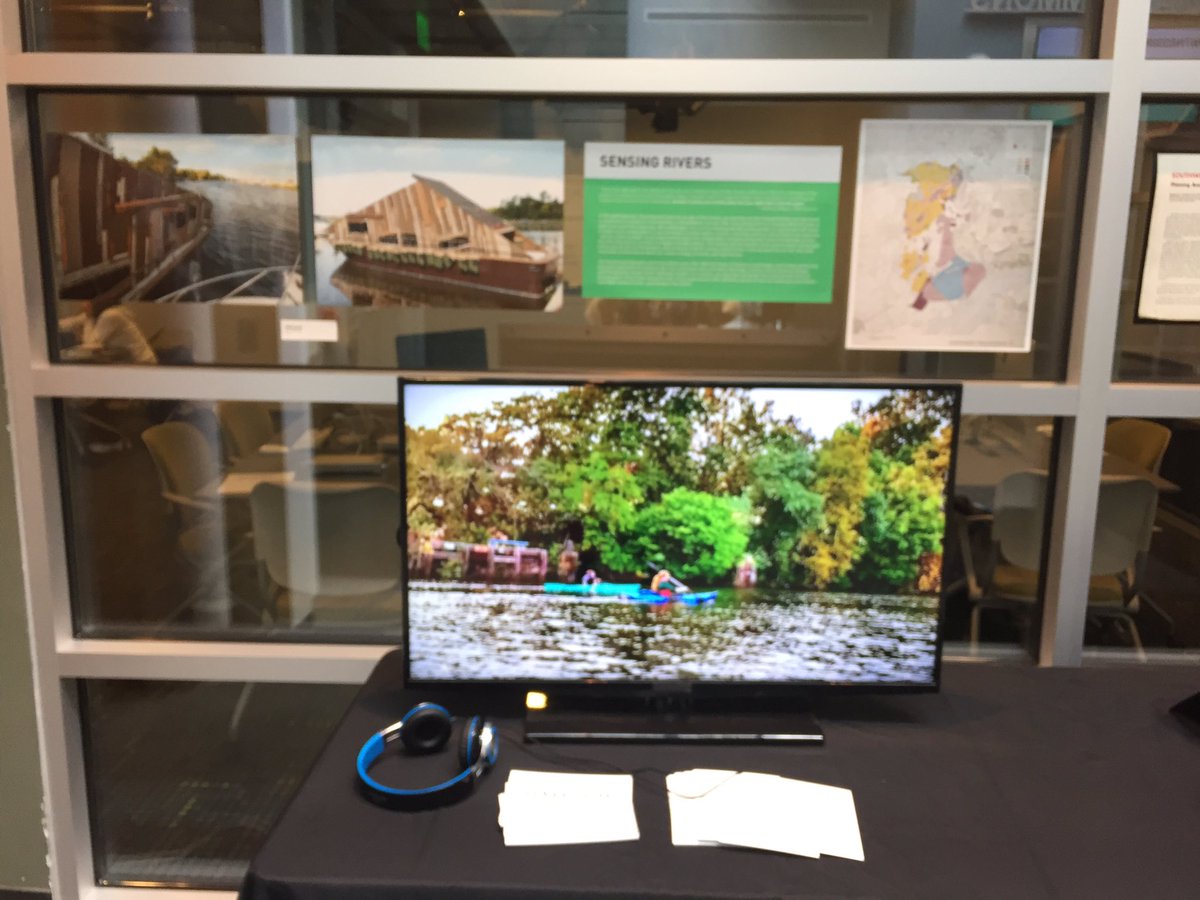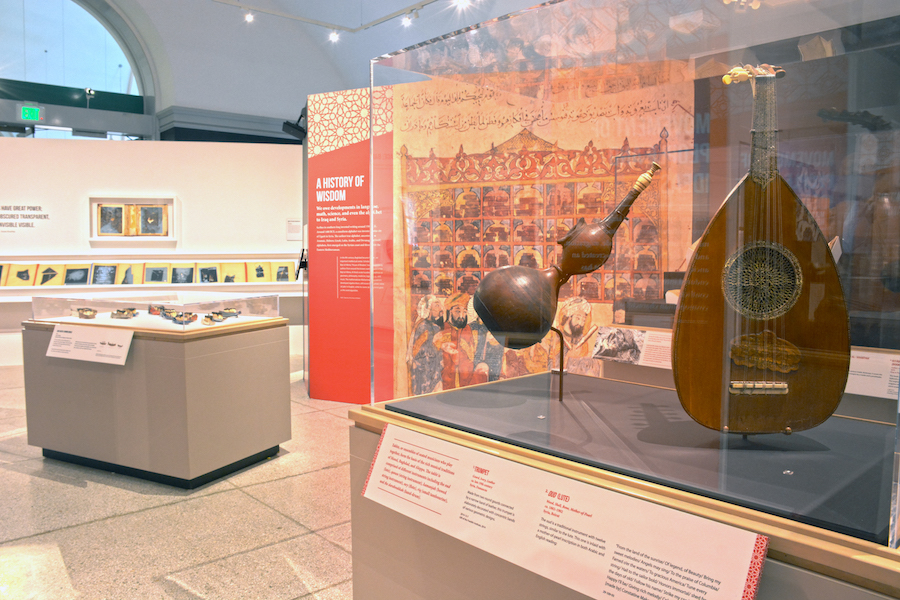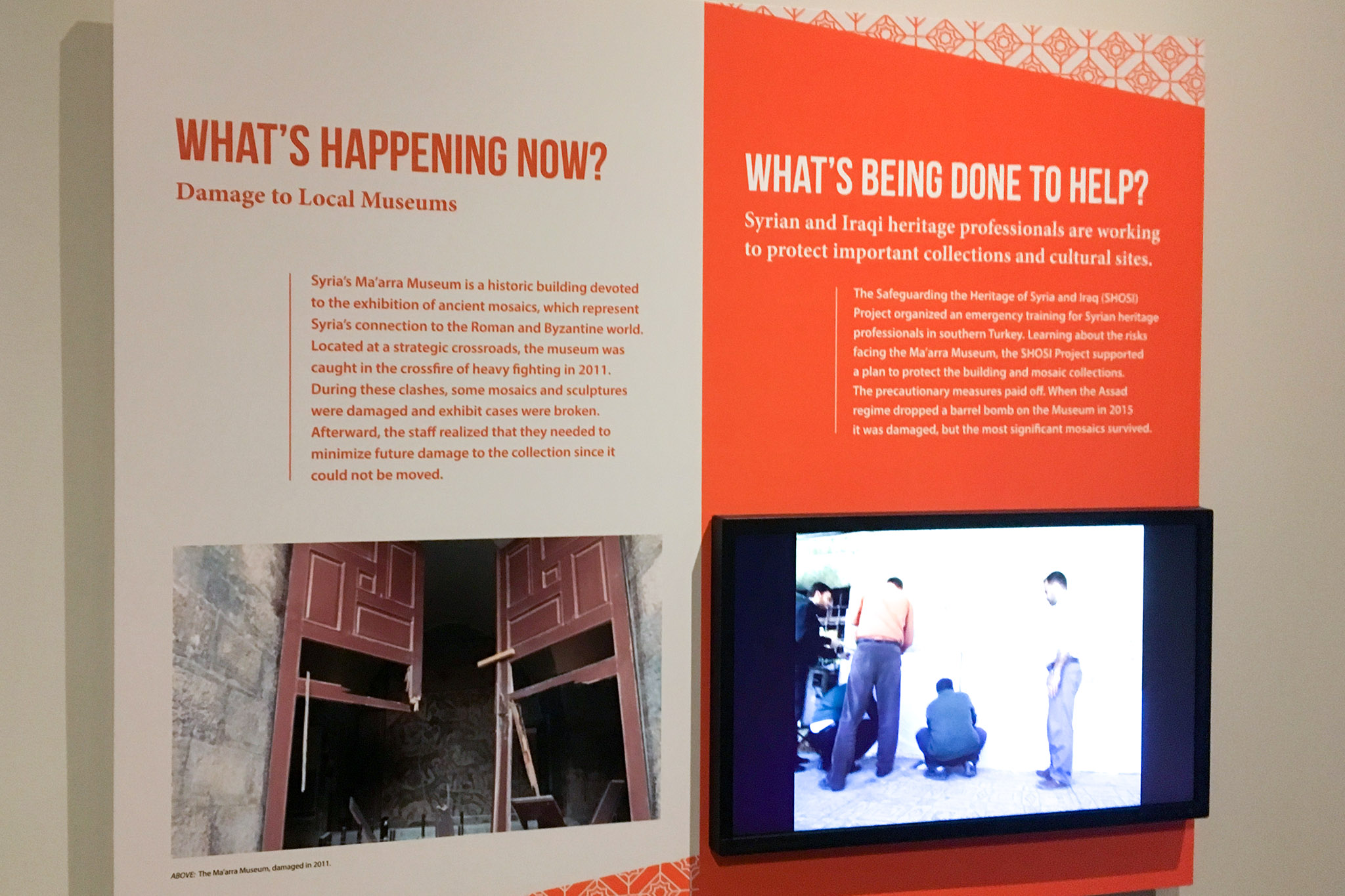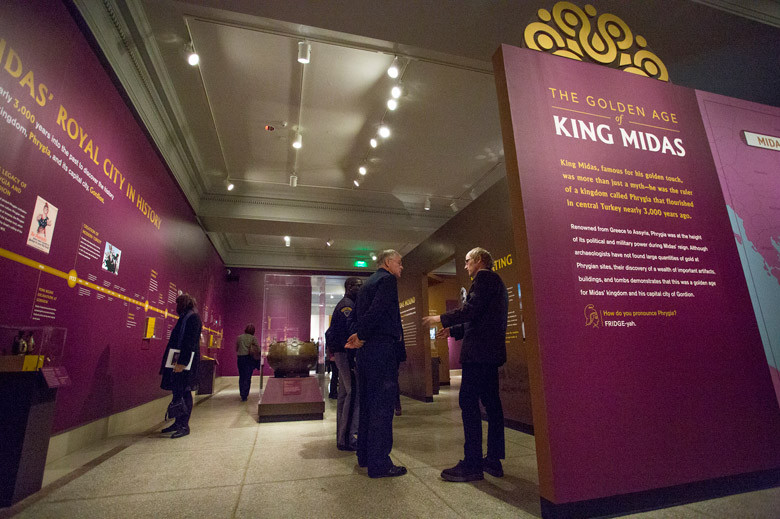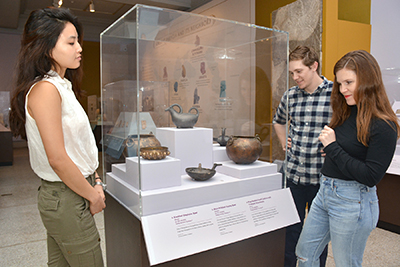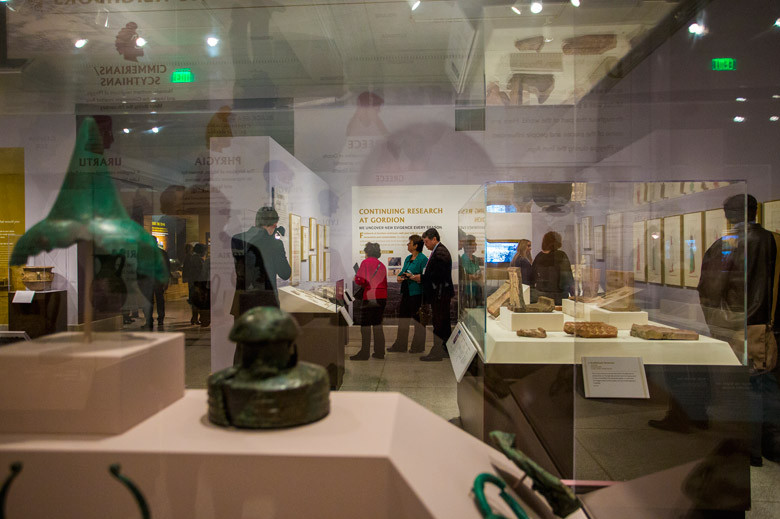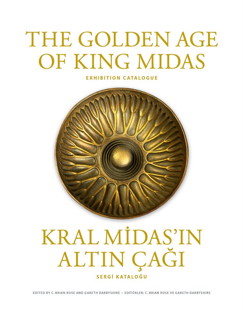Curatorial
Slow Motion
Curator
May 5, 2024-September 1, 2025
Grounds for Sculpture
Hamilton, New Jersey
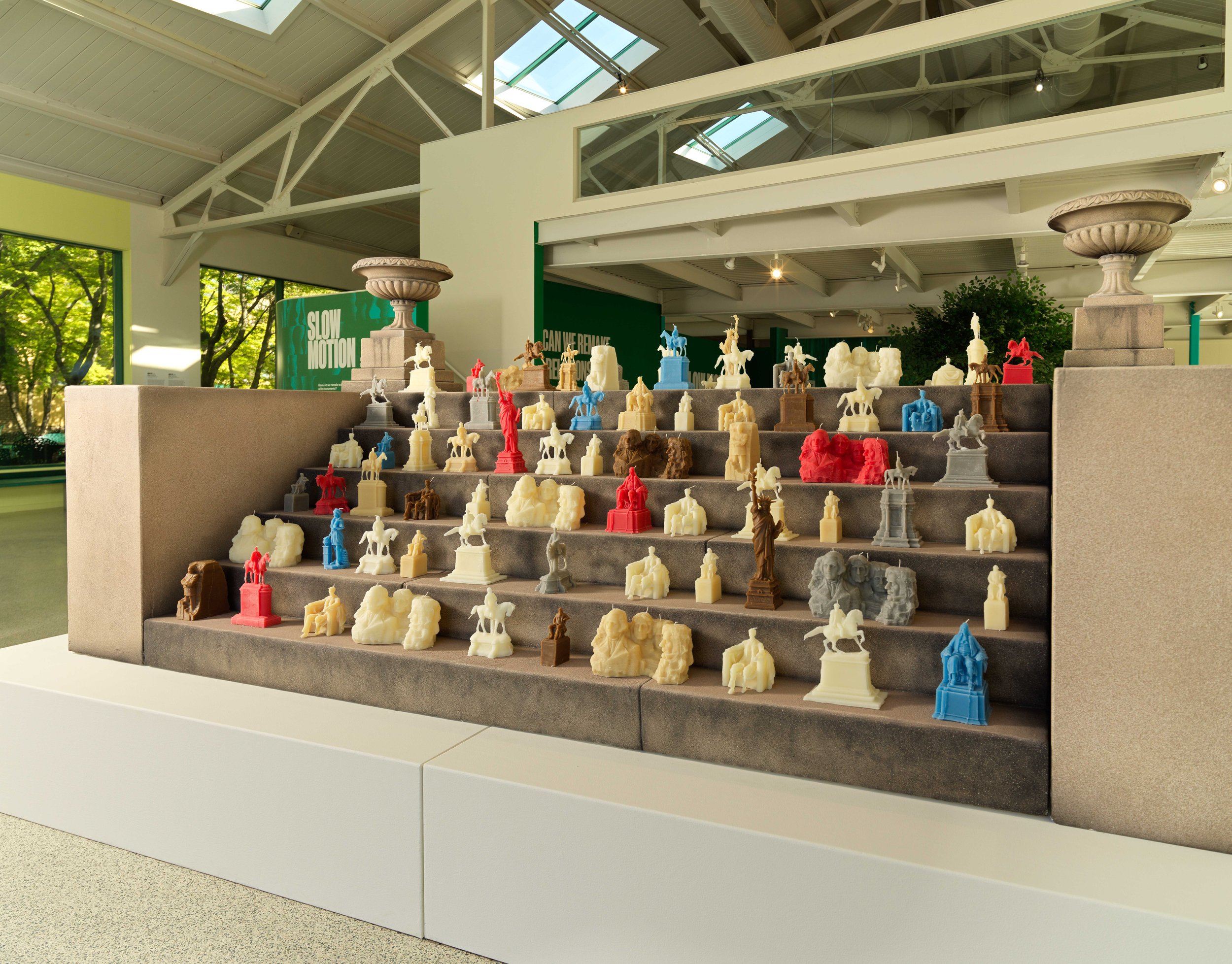
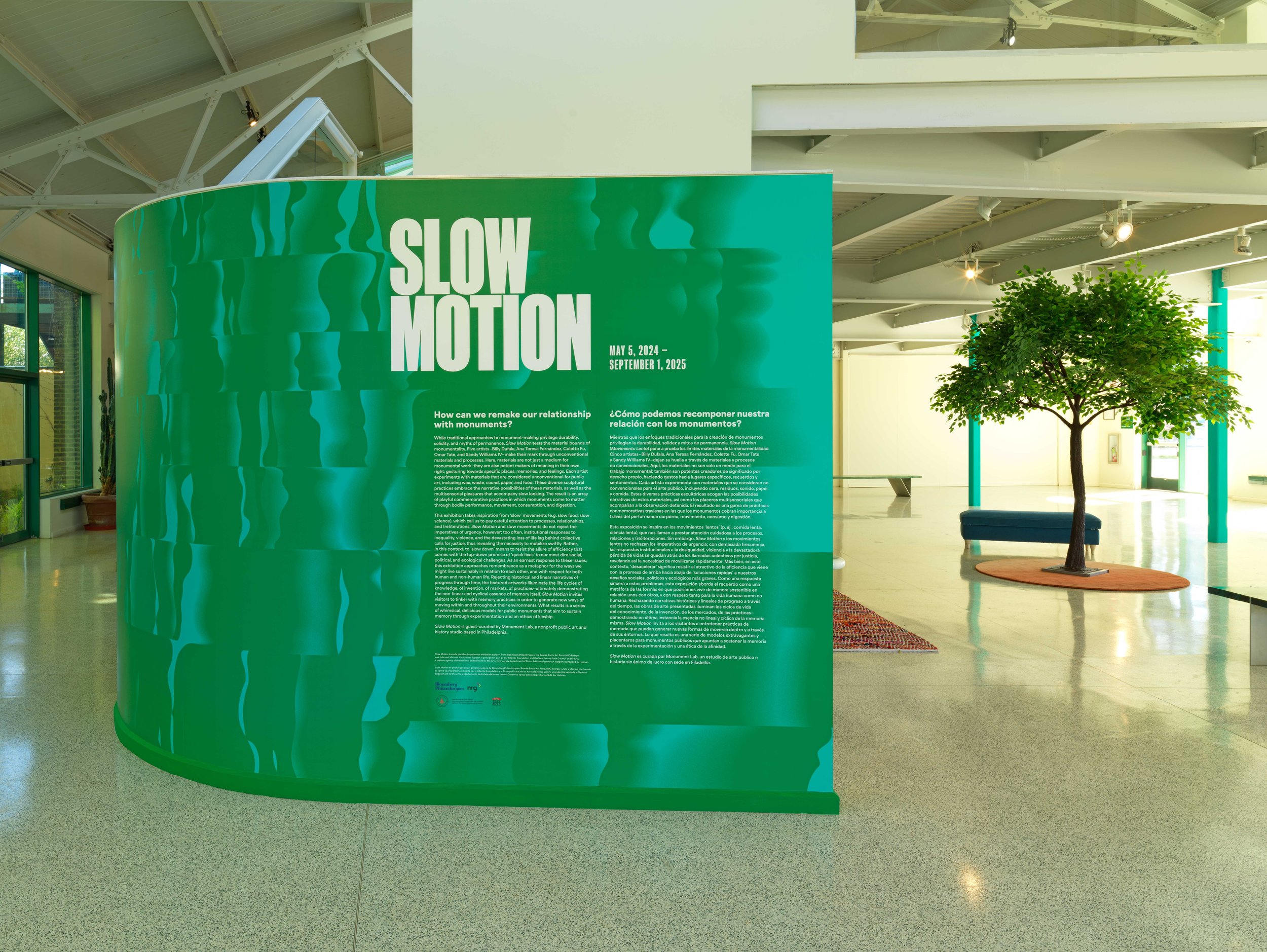
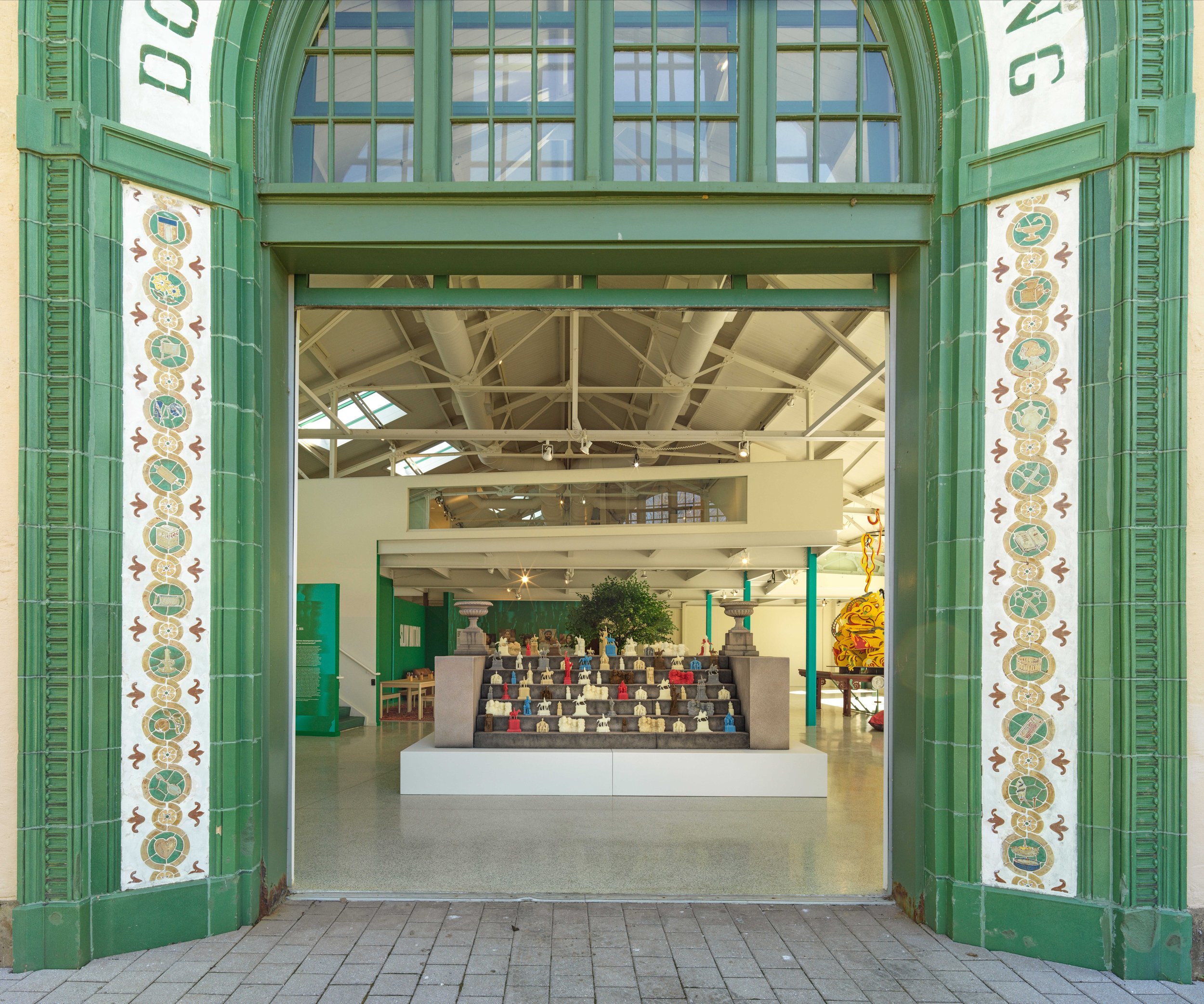
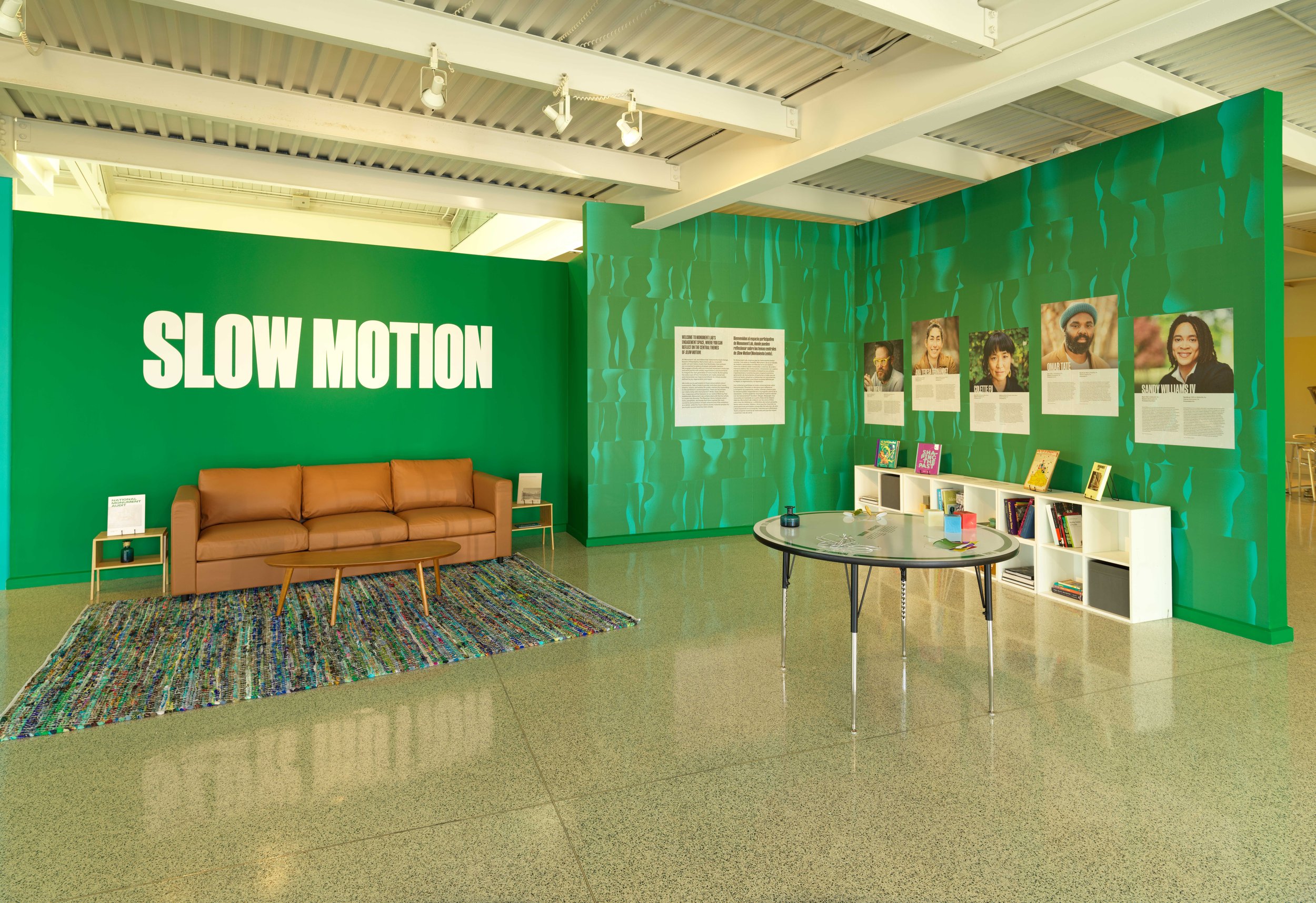
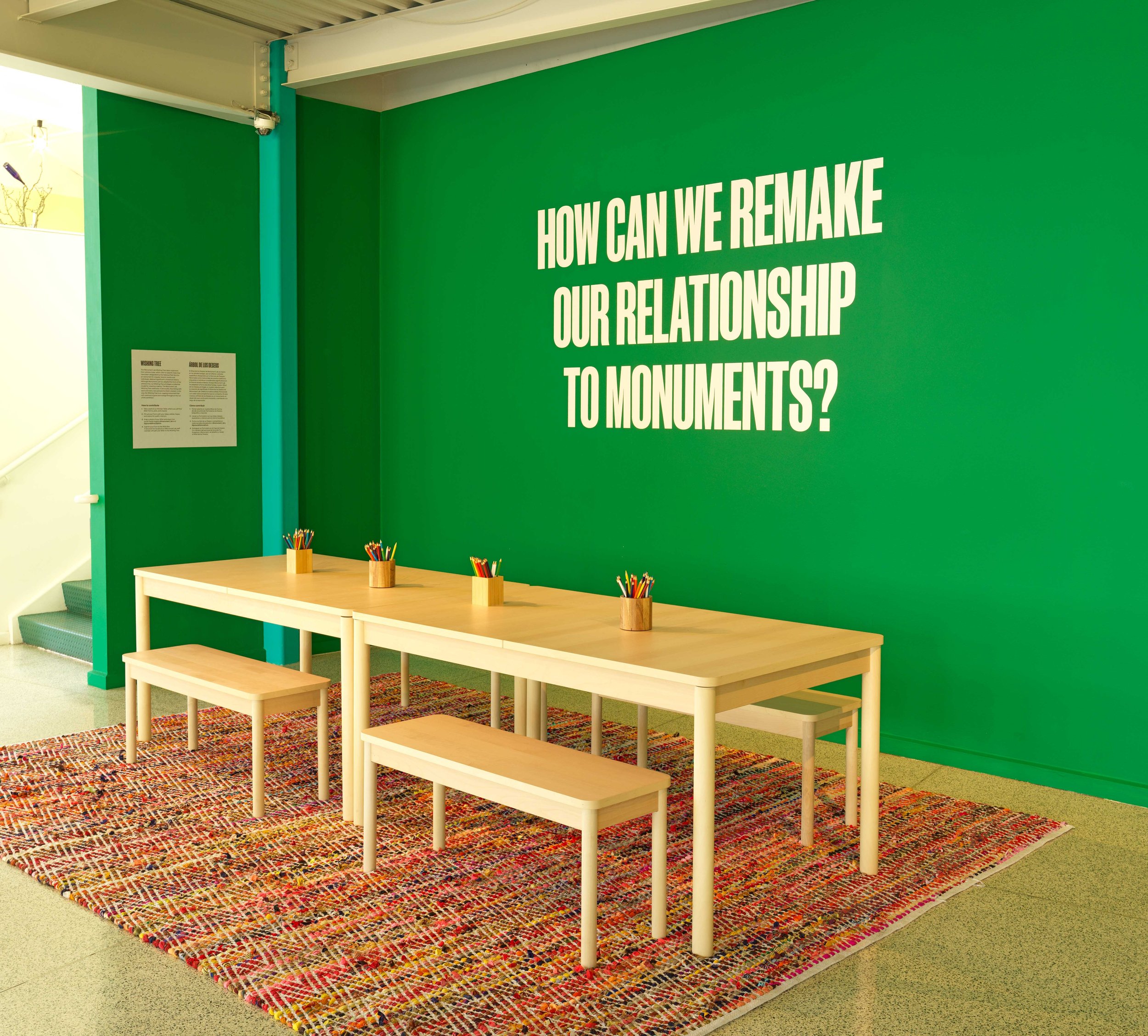
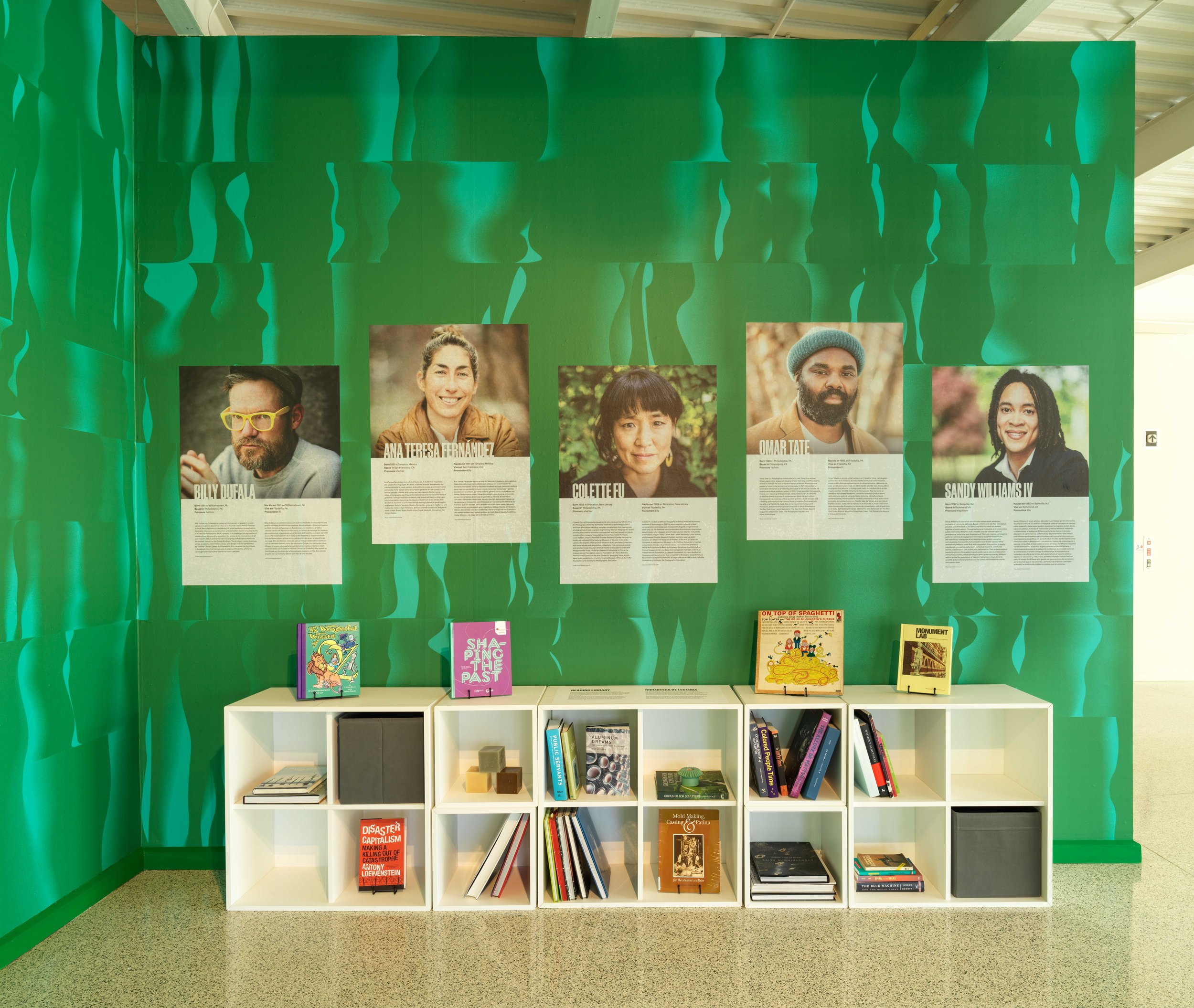
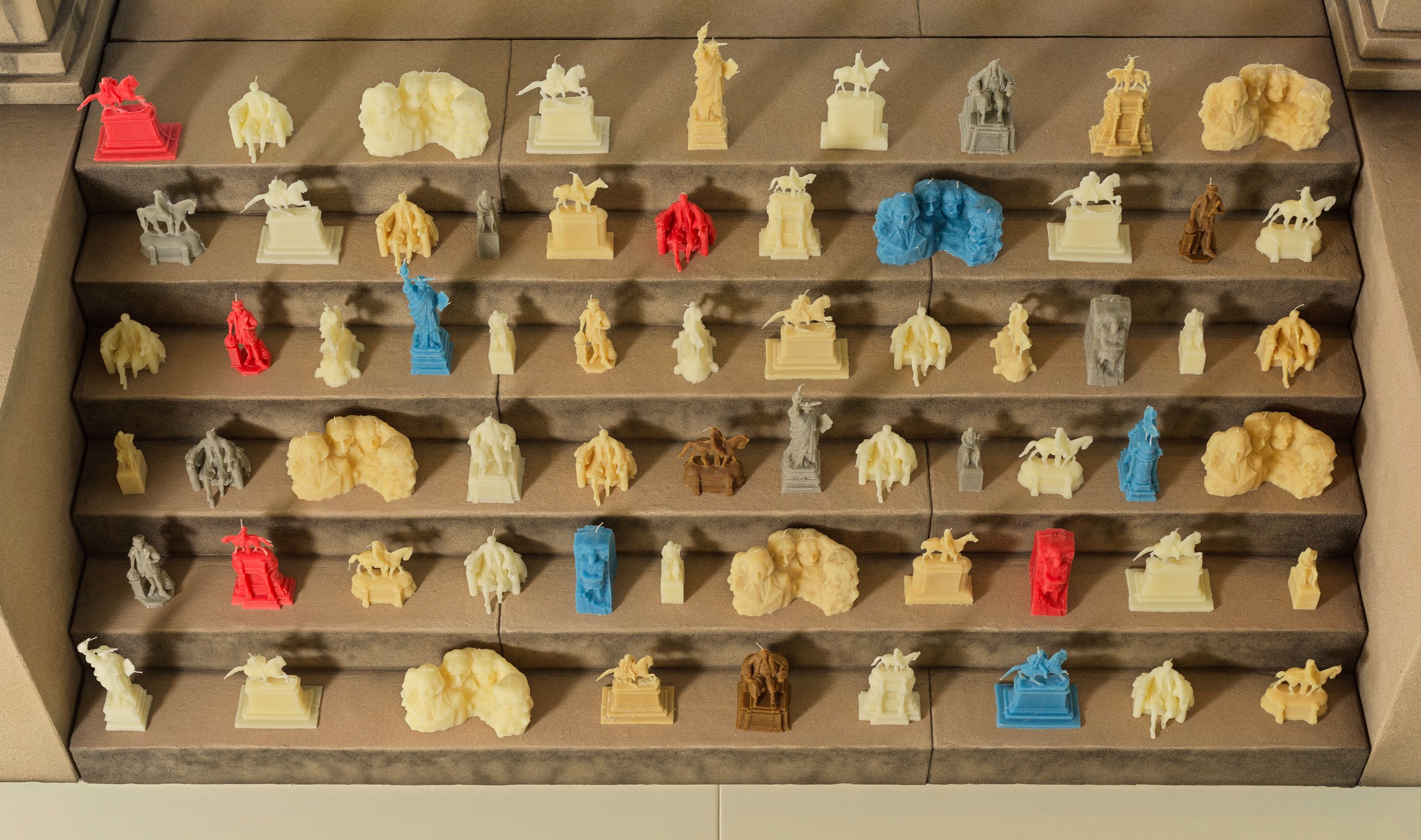
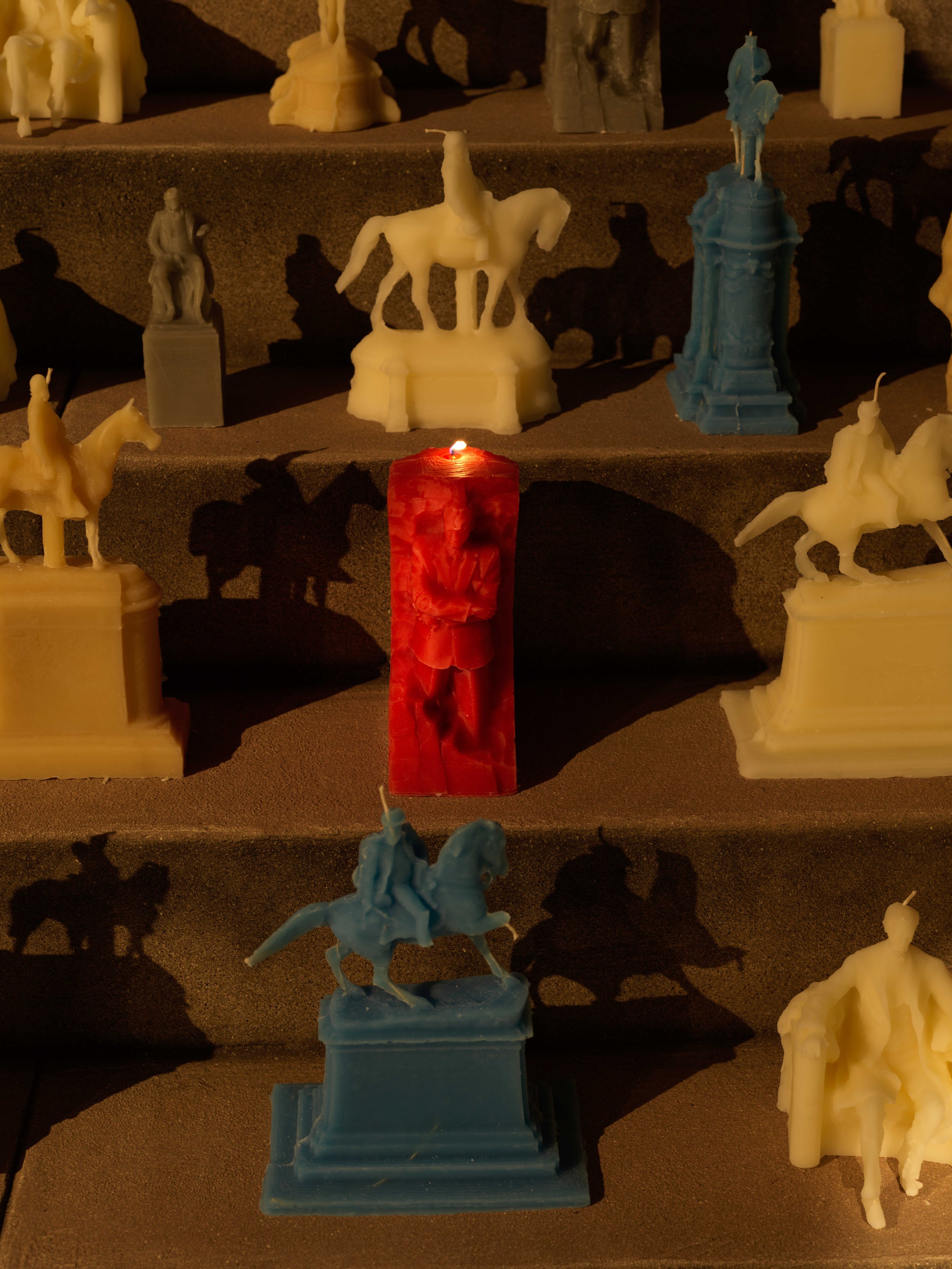

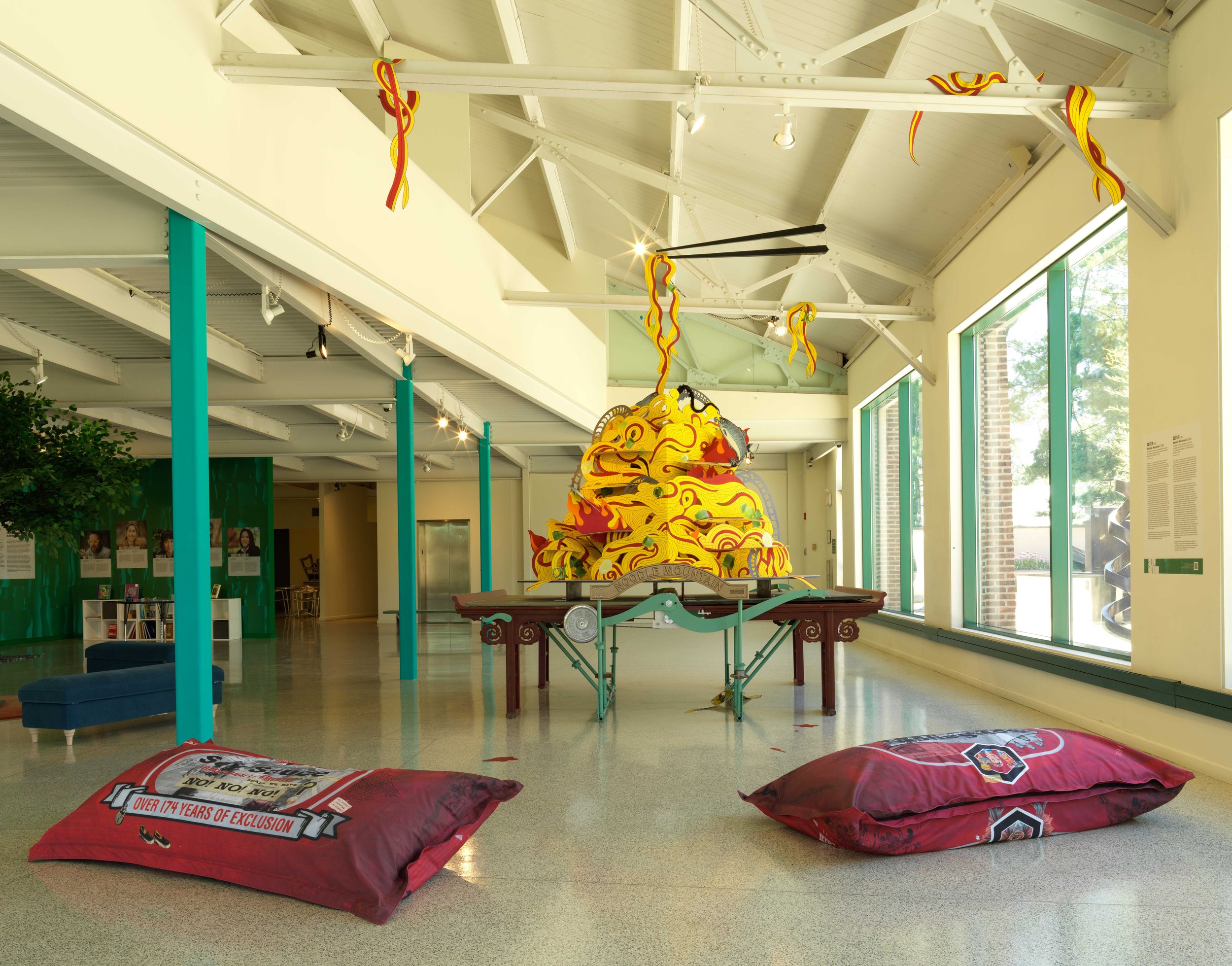

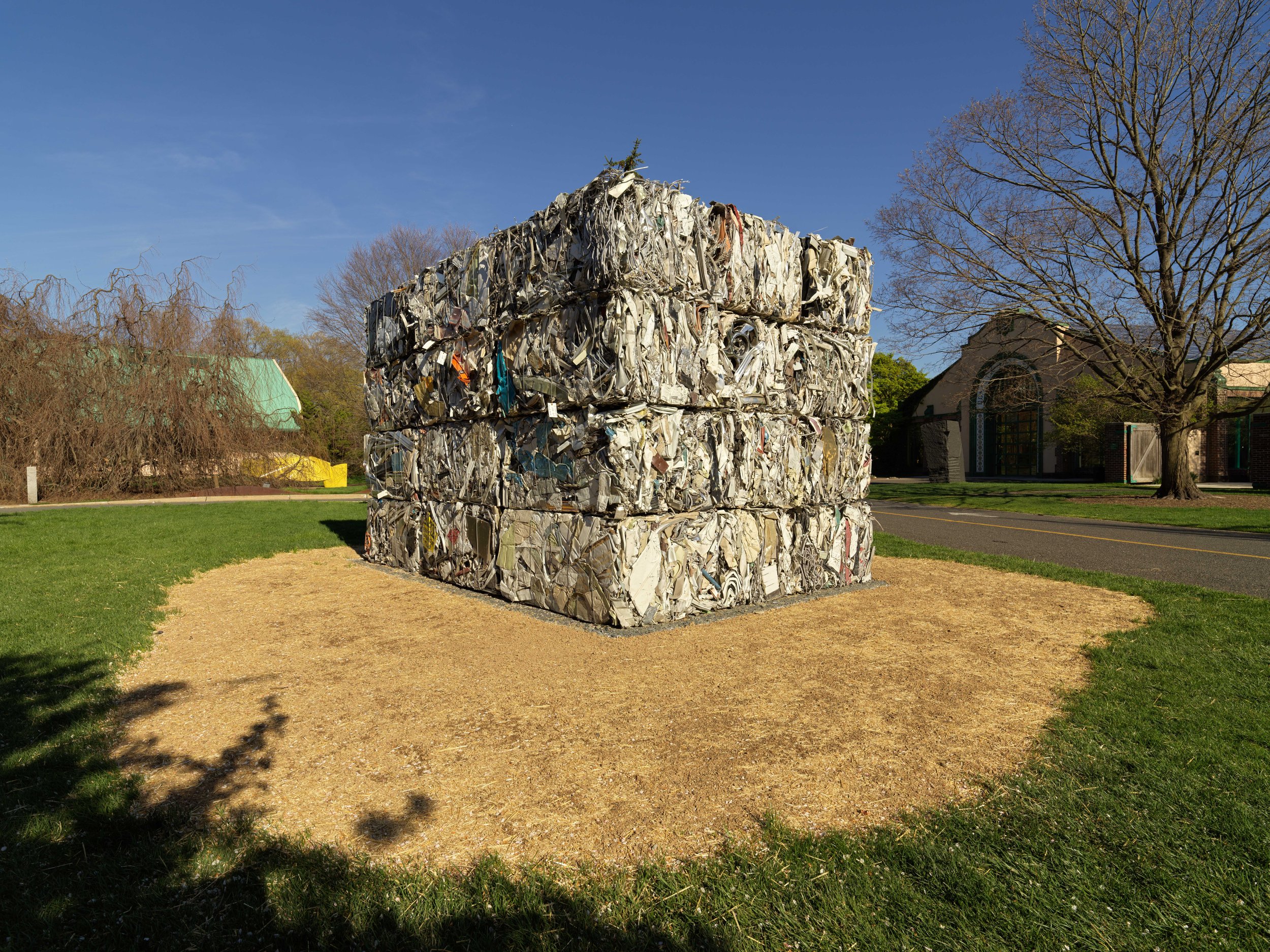
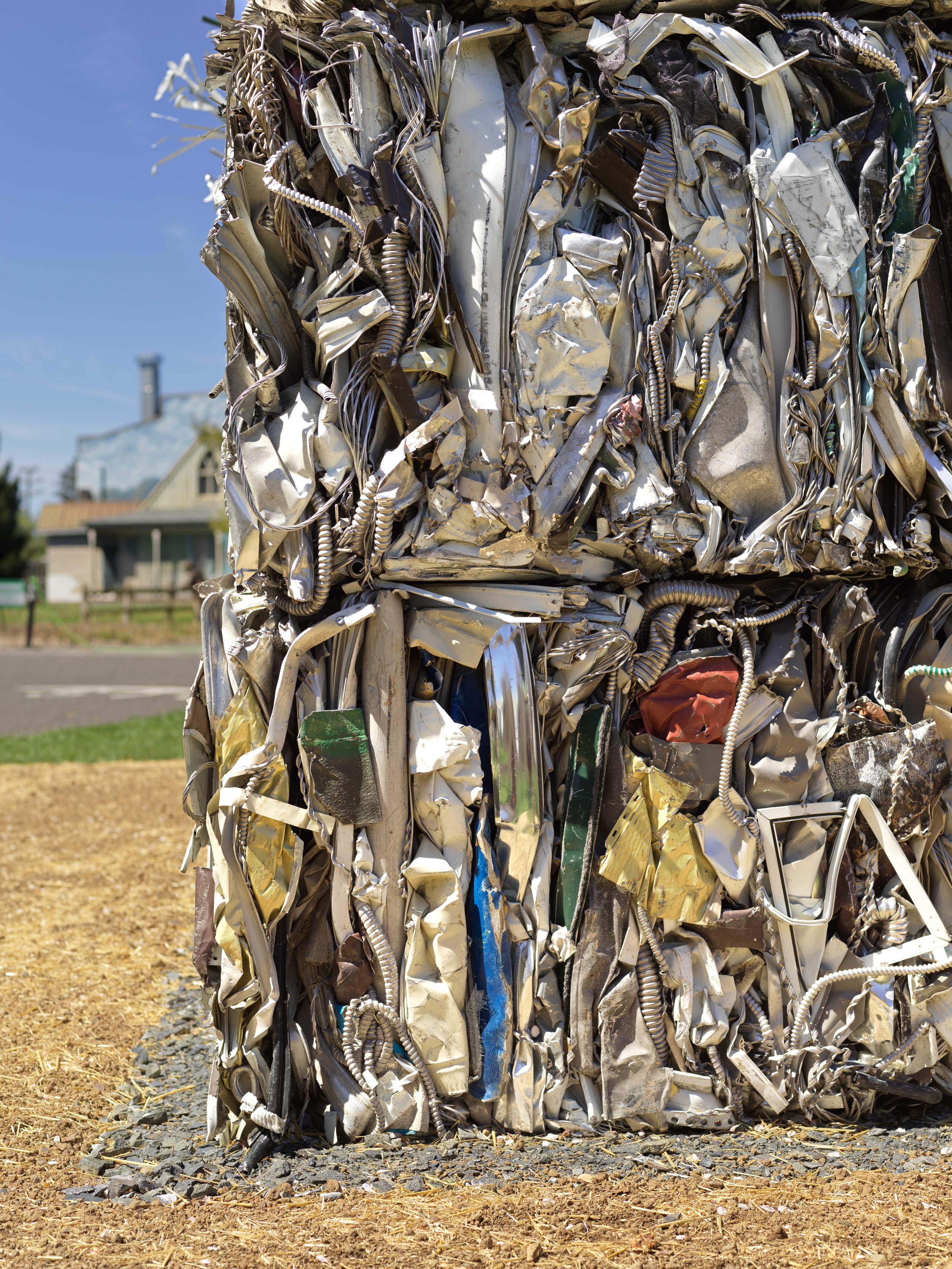
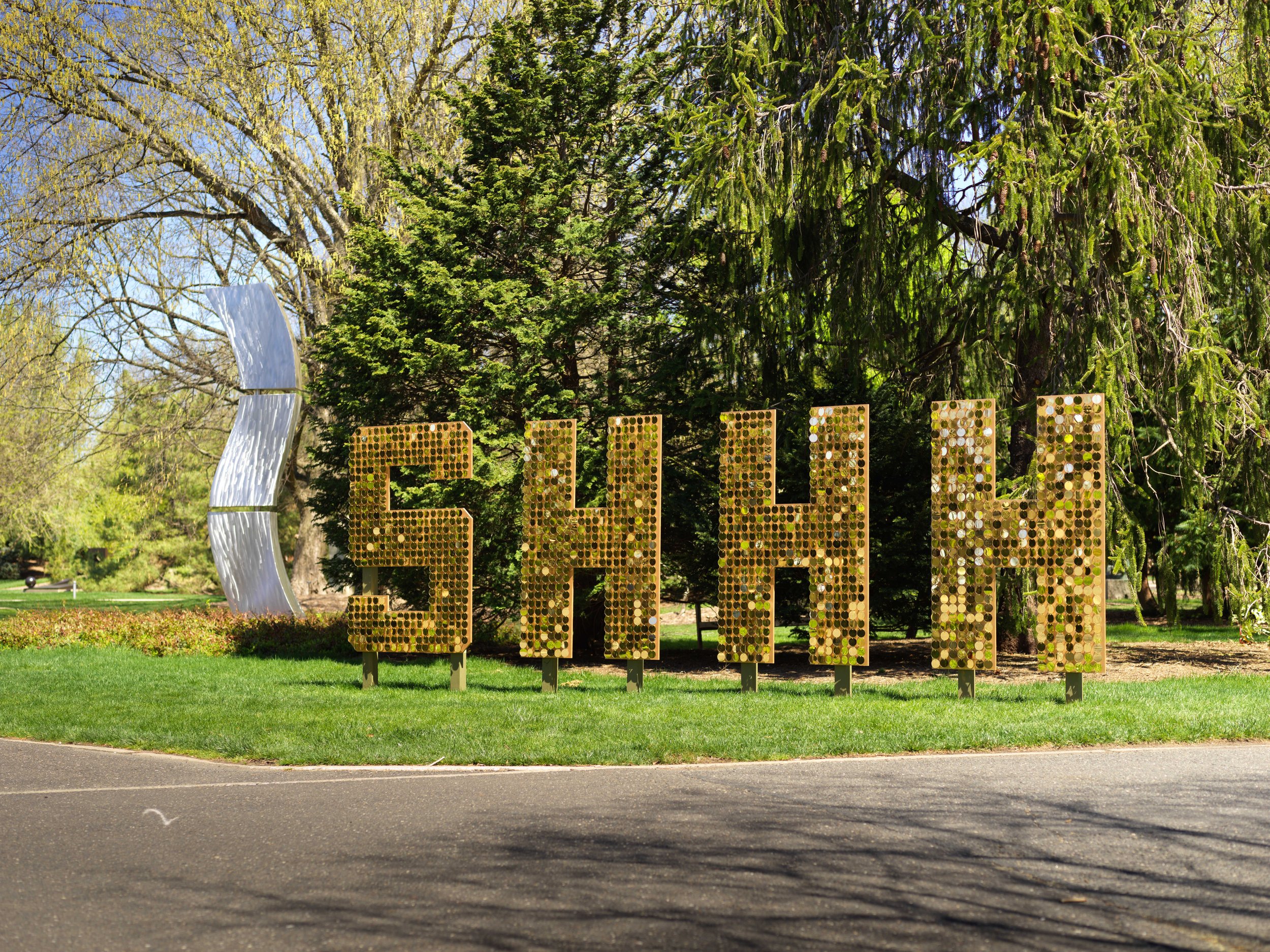
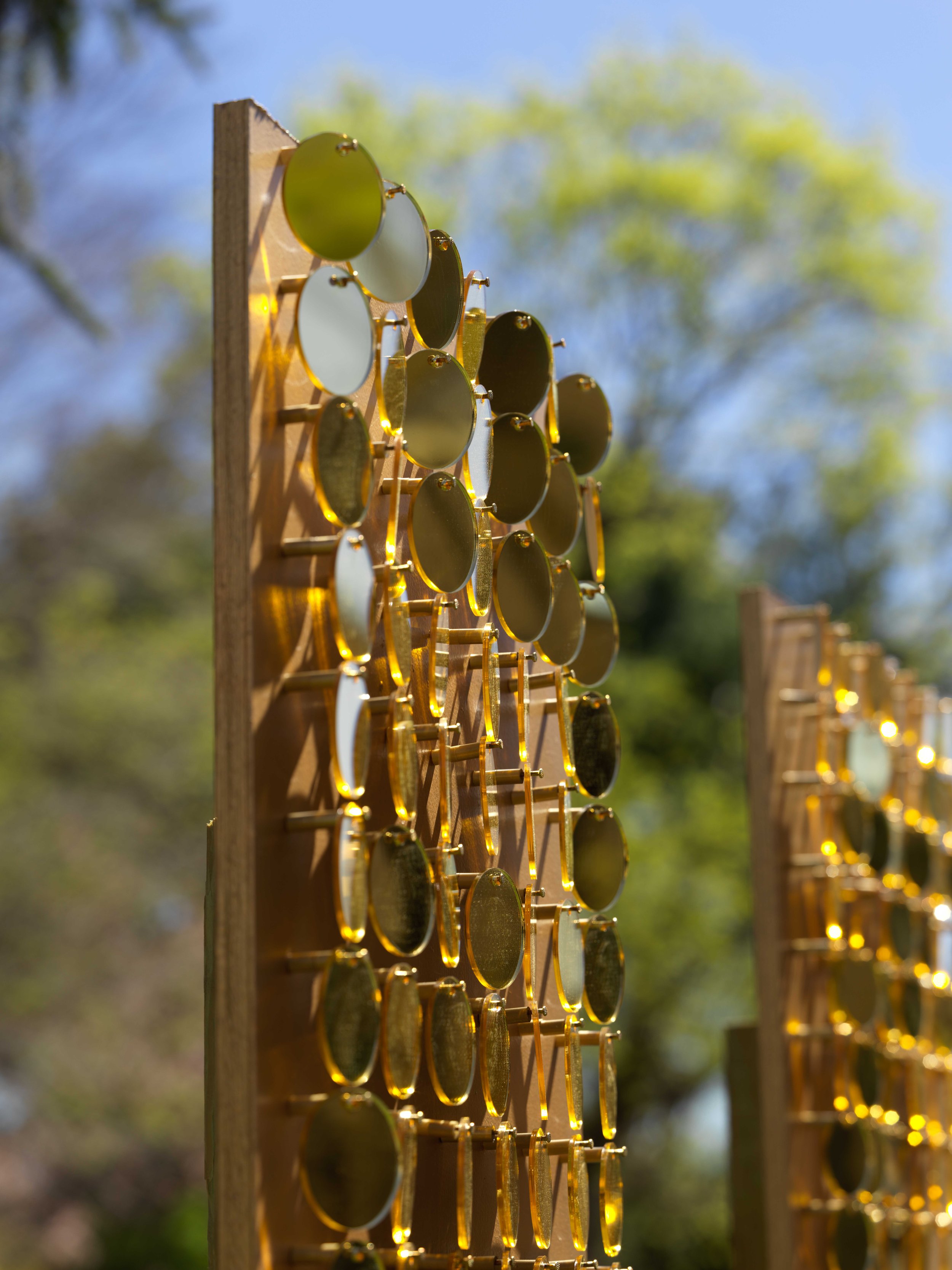
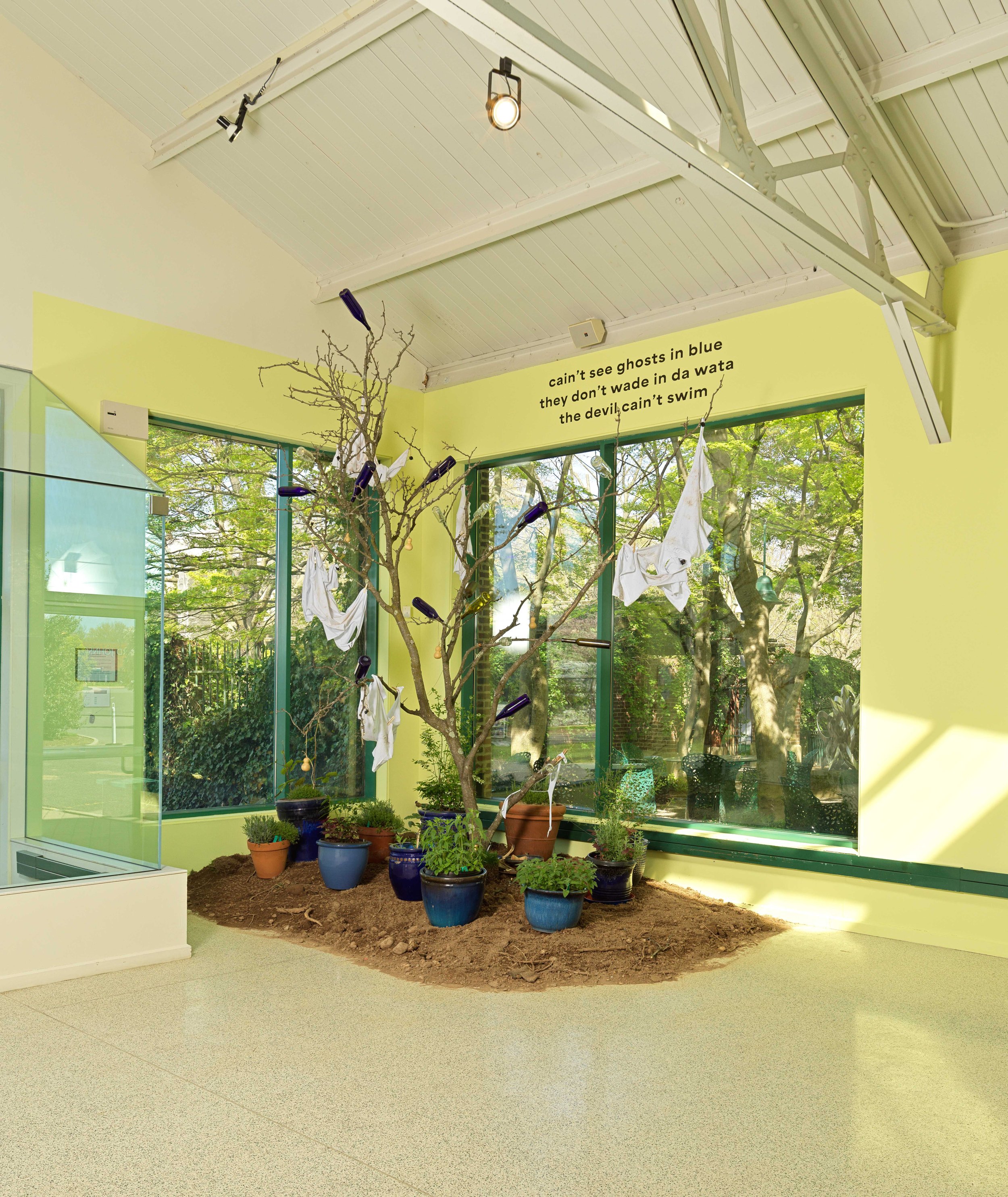
How can we remake our relationship with monuments?
While traditional approaches to monument-making privilege durability, solidity, and myths of permanence, Slow Motion tests the material bounds of monumentality. Five artists—Billy Dufala, Ana Teresa Fernández, Colette Fu, Omar Tate, and Sandy Williams IV—make their mark through unconventional materials and processes. Here, materials are not just a medium for monumental work; they are also potent makers of meaning in their own right, gesturing towards specific places, memories, and feelings. Each artist experiments with materials that are considered unconventional for public art, including wax, waste, sound, paper, and food. These diverse sculptural practices embrace the narrative possibilities of these materials, as well as the multisensorial pleasures that accompany slow looking. The result is an array of playful commemorative practices in which monuments come to matter through bodily performance, movement, consumption, and digestion.
This exhibition takes inspiration from ‘slow’ movements (e.g. slow food, slow science), which call us to pay careful attention to processes, relationships, and (re)iterations. Slow Motion and slow movements do not reject the imperatives of urgency, however; too often, institutional responses to inequality, violence, and the devastating loss of life lag behind collective calls for justice, thus revealing the necessity to mobilize swiftly. Rather, in this context, to ‘slow down’ means to resist the allure of efficiency that comes with the top-down promise of ‘quick fixes’ to our most dire social, political, and ecological challenges. As an earnest response to these issues, this exhibition approaches remembrance as a metaphor for the ways we might live sustainably in relation to each other, and with respect for both human and non-human life. Rejecting historical and linear narratives of progress through time, the featured artworks illuminate the life cycles of knowledge, of invention, of markets, of practices—ultimately demonstrating the non-linear and cyclical essence of memory itself. Slow Motion invites visitors to tinker with memory practices in order to generate new ways of moving within and throughout their environments. What results is a series of whimsical, delicious models for public monuments that aim to sustain memory through experimentation and an ethics of kinship.
Curator: Patricia Eunji Kim
Artistic Director: Paul M. Farber
Project Management: Gina Ciralli
Monument Lab Team: Kristen Giannantonio, Jonai Gibson-Selix, Nico Rodriguez, Benji Hsu, Florie Hutchinson, Dina Paola Rodriguez, Bella Rodriguez, Cleary Rubinos, and Elliot Waters-Fleming.
Grounds For Sculpture Team: Gary Garrido Schneider, Kathleen Ogilvie Greene, Faith McClellan, Emily Snedden Yates, Marissa Reibstein, Karen Hollywood, Julio Enrique Badel, Lauren Collalto, Joshua Ortiz, Sam Hwang, and Matt Smith
Designer: Will Hodgson
Illustrator: Symone Salib
Fluid Matters, Grounded Bodies: Decolonizing Ecological Encounters
Joiri Minaya, Containers #6, 2020. Photo still from performance. 60 x 40 inches. Image Provided by the artist.
Historically, colonial enterprises have violently linked land- and water-scapes with the bodies of women and femmes, queer people, and people of color in order to dehumanize them. By becoming dirt and water, such bodies have been equated with “natural” resources, made vulnerable to exploitation, extraction, and land theft justified along lines of race, gender, and sexuality. Yet such linkages, particularly in recent years, have been meaningfully appropriated by artists as acts of resistance that articulate new futures and magnify marginalized histories. Presenting the work of Farah Al Qasimi, Beatriz Cortez, micha cárdenas, Tessa Grundon, Allison Janae Hamilton, Joiri Minaya, Ada M. Patterson, Wendy Red Star, Himali Singh Soin with Alexis Rider, Annie Sprinkle, and Beth Stephens, Fluid Matters, Grounded Bodies: Decolonizing Ecological Encounters engages with complex questions around impermanence, belonging, transformation, and erasure as they relate to human (and non-human) lives and the earth itself.
The exhibition was first displayed at The Gallatin Galleries (New York City, 2022), and has been restaged at Gallery 360 (Boston, 2023-24).
In the News:
Art New England. “Fluid Matters, Grounded Bodies: Decolonizing Ecological Encounters,” January/February 2024.
The Bay State Banner. “Cross-campus art installation, ‘Fluid Matters, Grounded Bodies,’ aims to entice local residents to Northeastern,” November 22, 2023.
Northeastern Global State News. “A new Gallery 360 exhibition is a cross-campus exploration of water, earth, human bodies and decolonizing the environment,” November 15, 2023.
Art Spiel. “Decolonizing Ecological Encounters at the Gallatin Galleries,” August 6, 2022.
November 16, 2023-April 6, 2024
Gallery 360
Boston, MA
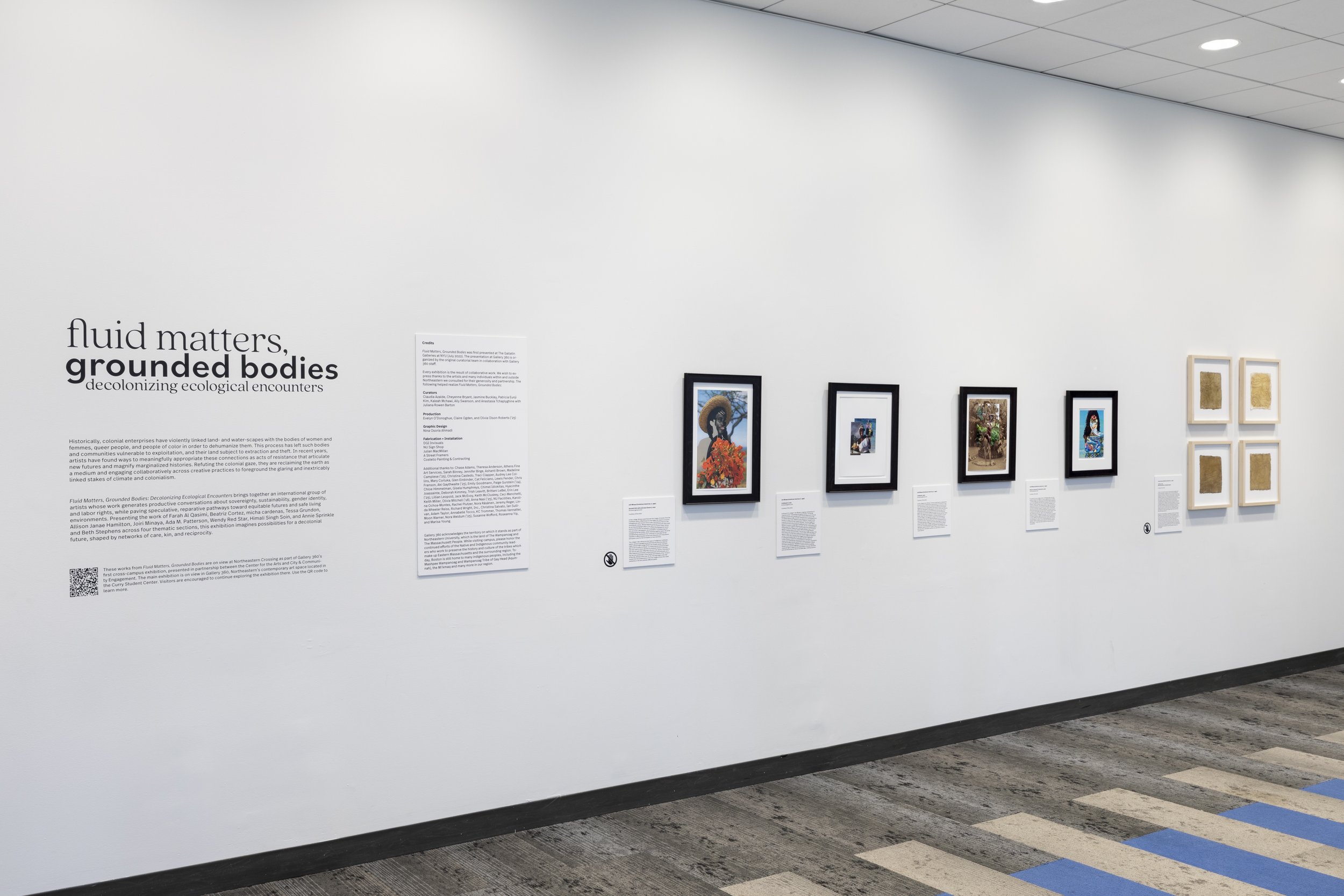
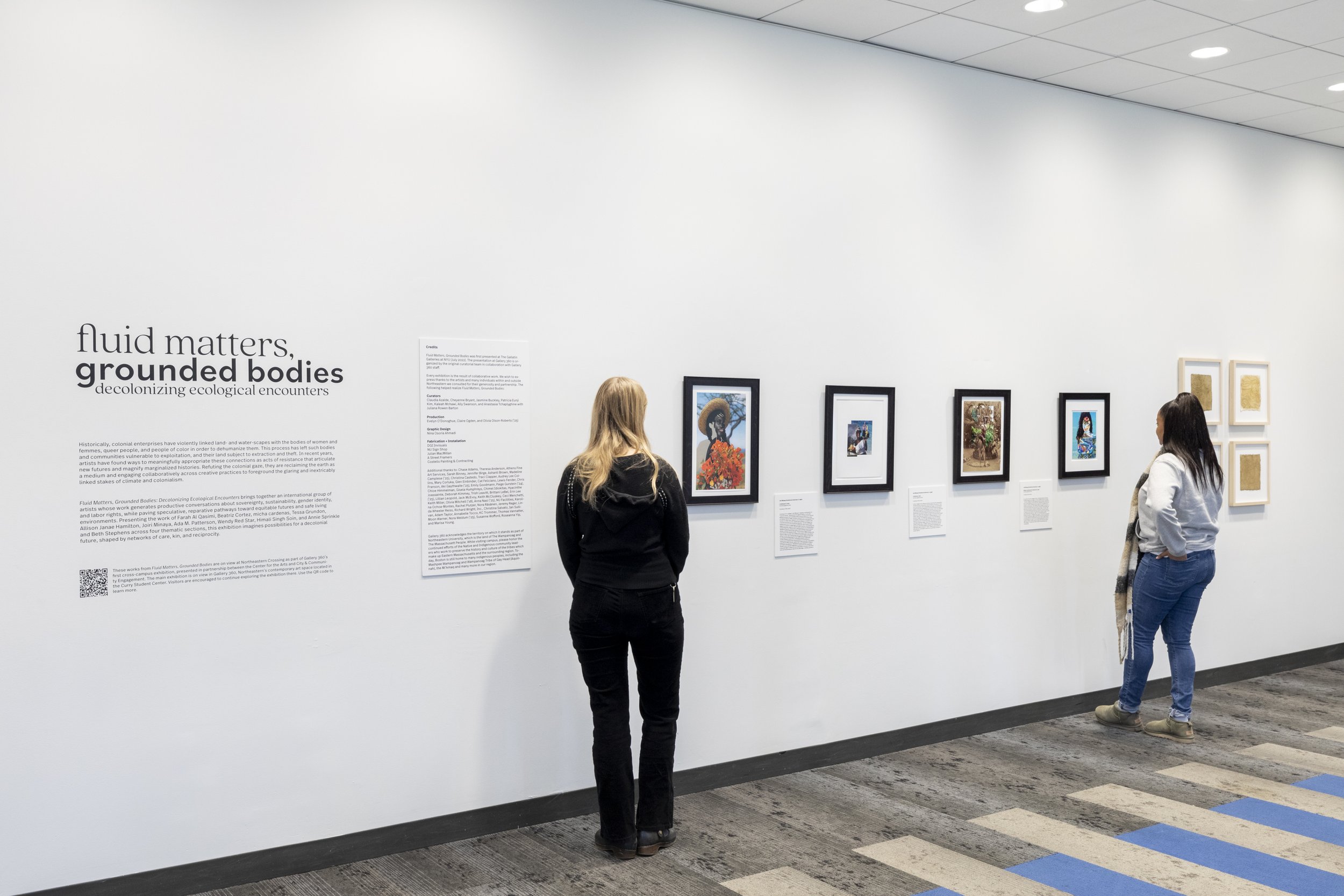
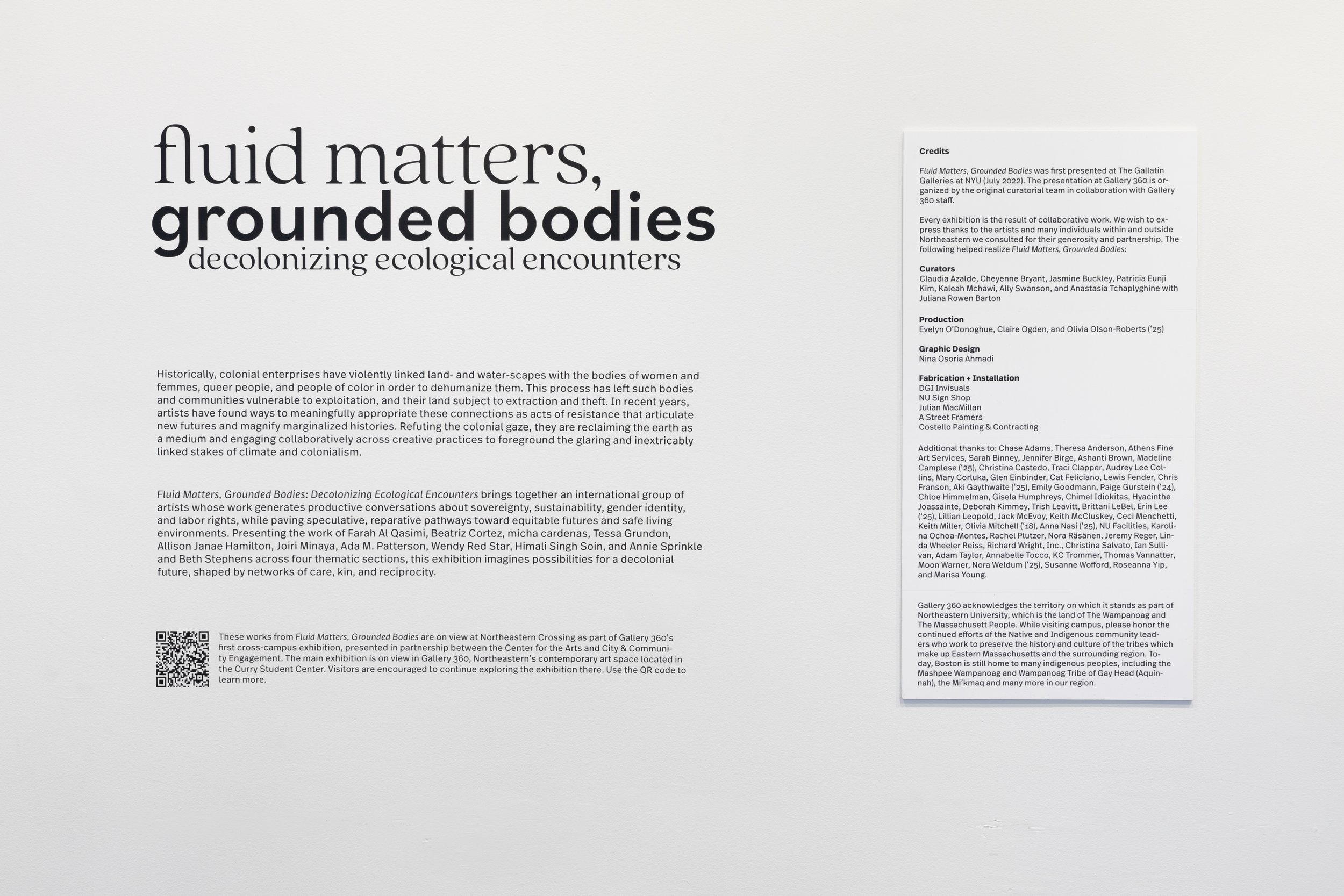
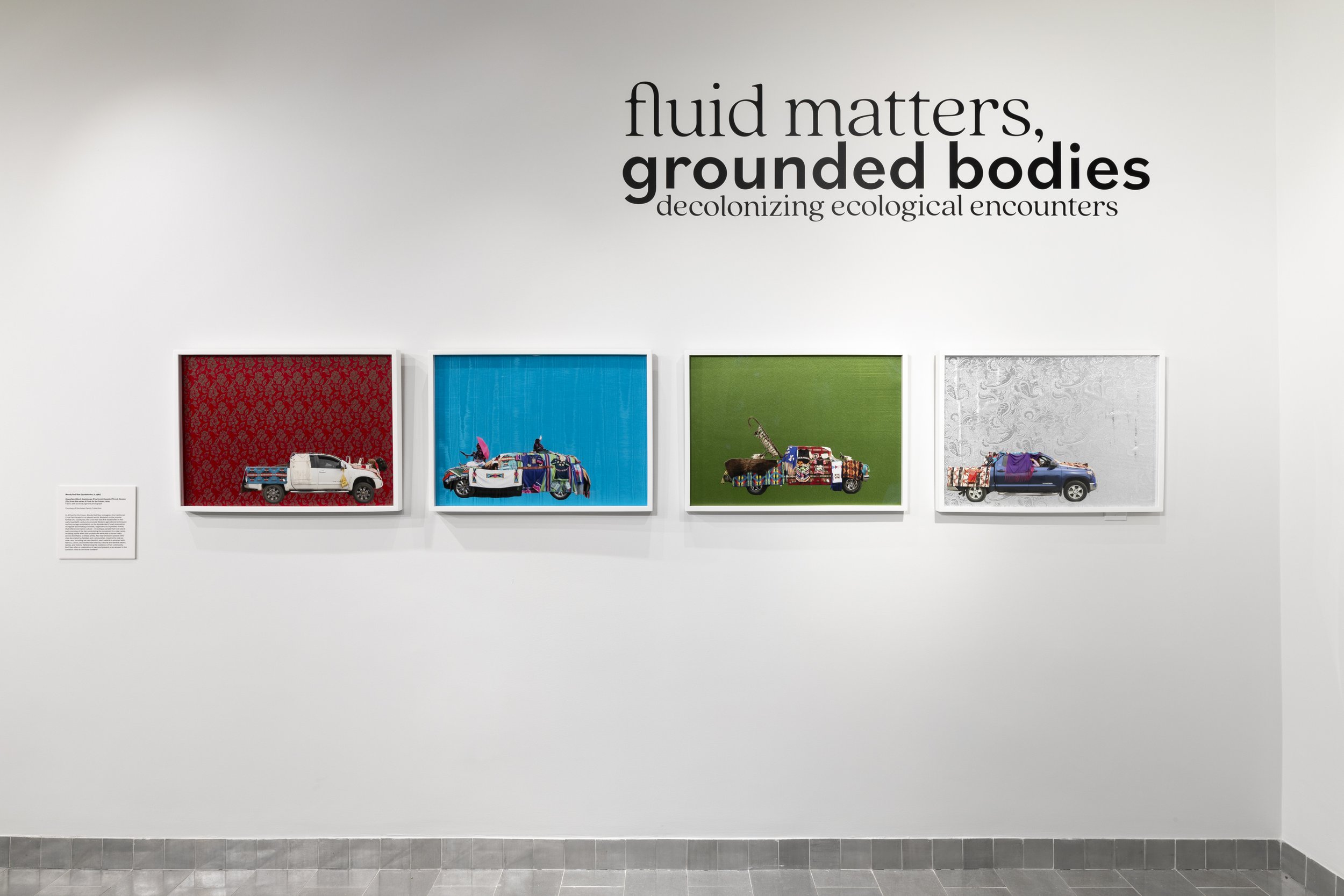
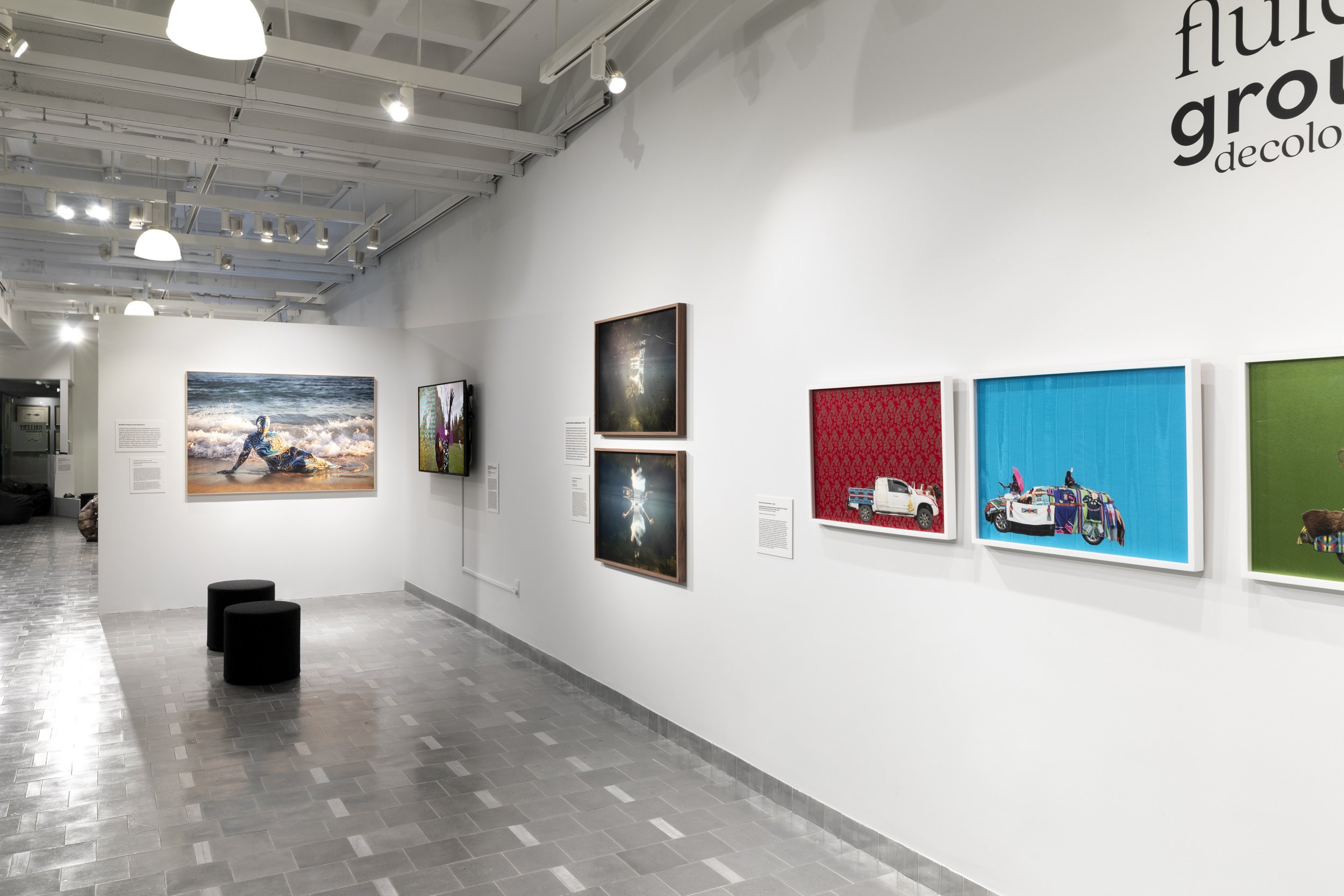
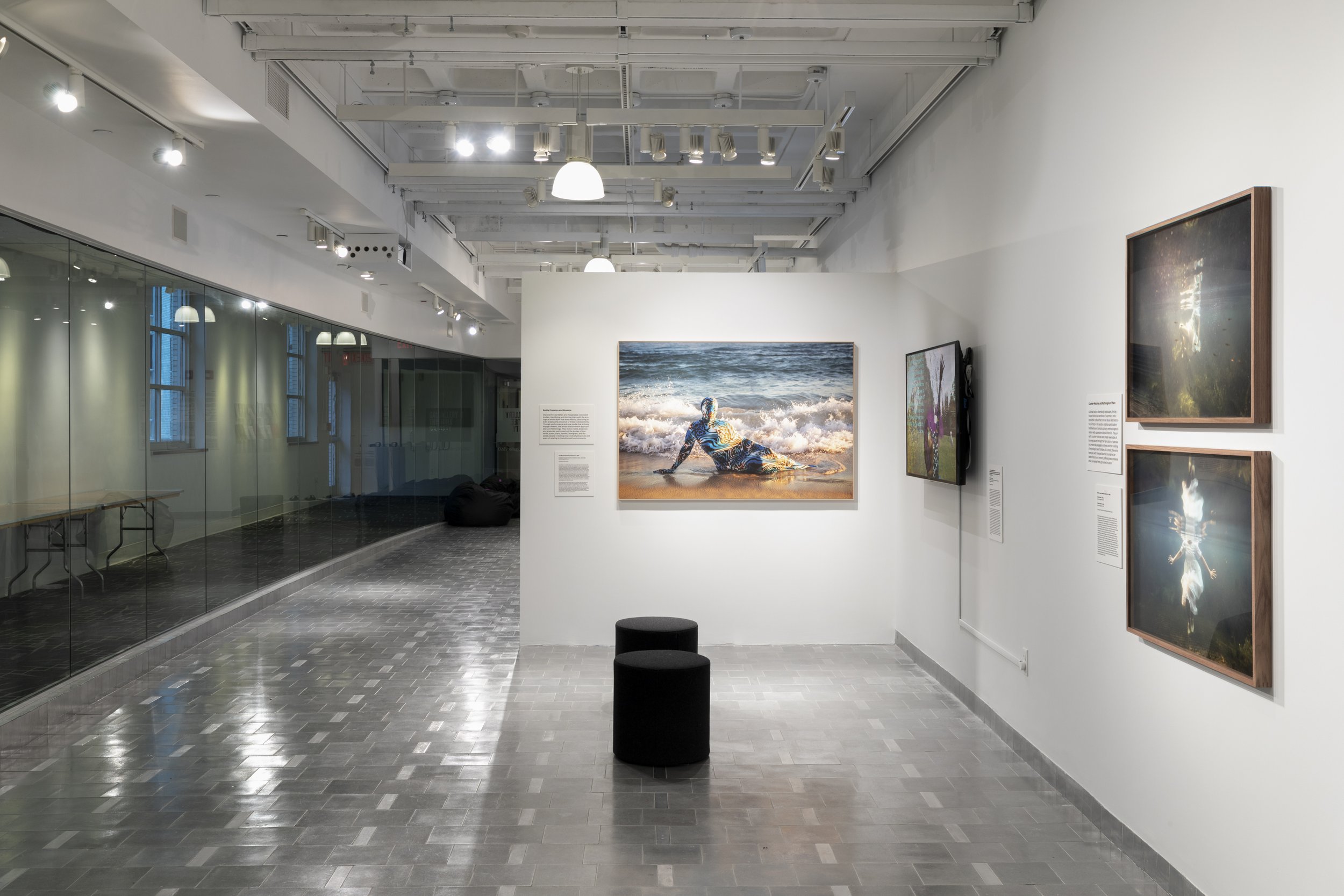
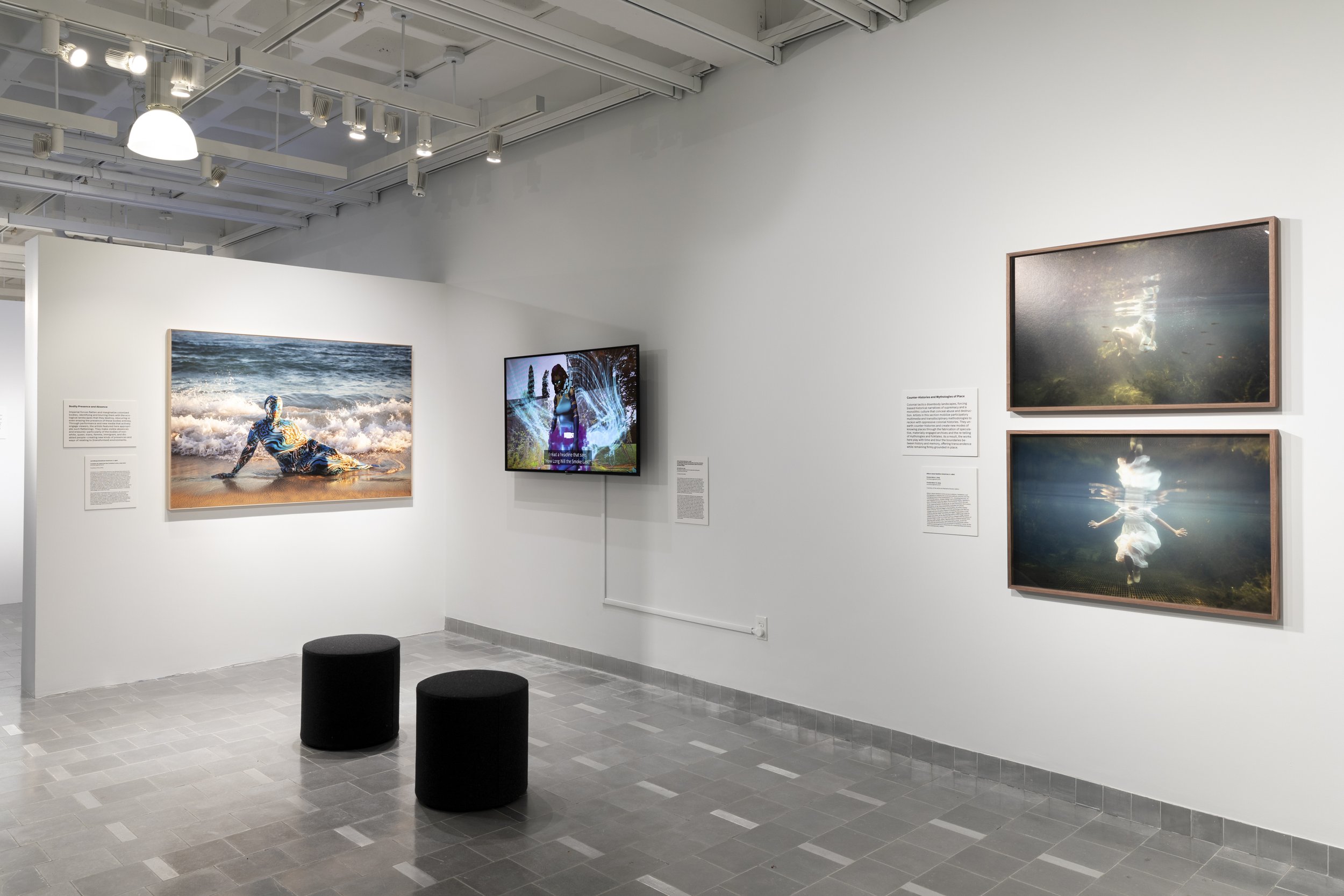
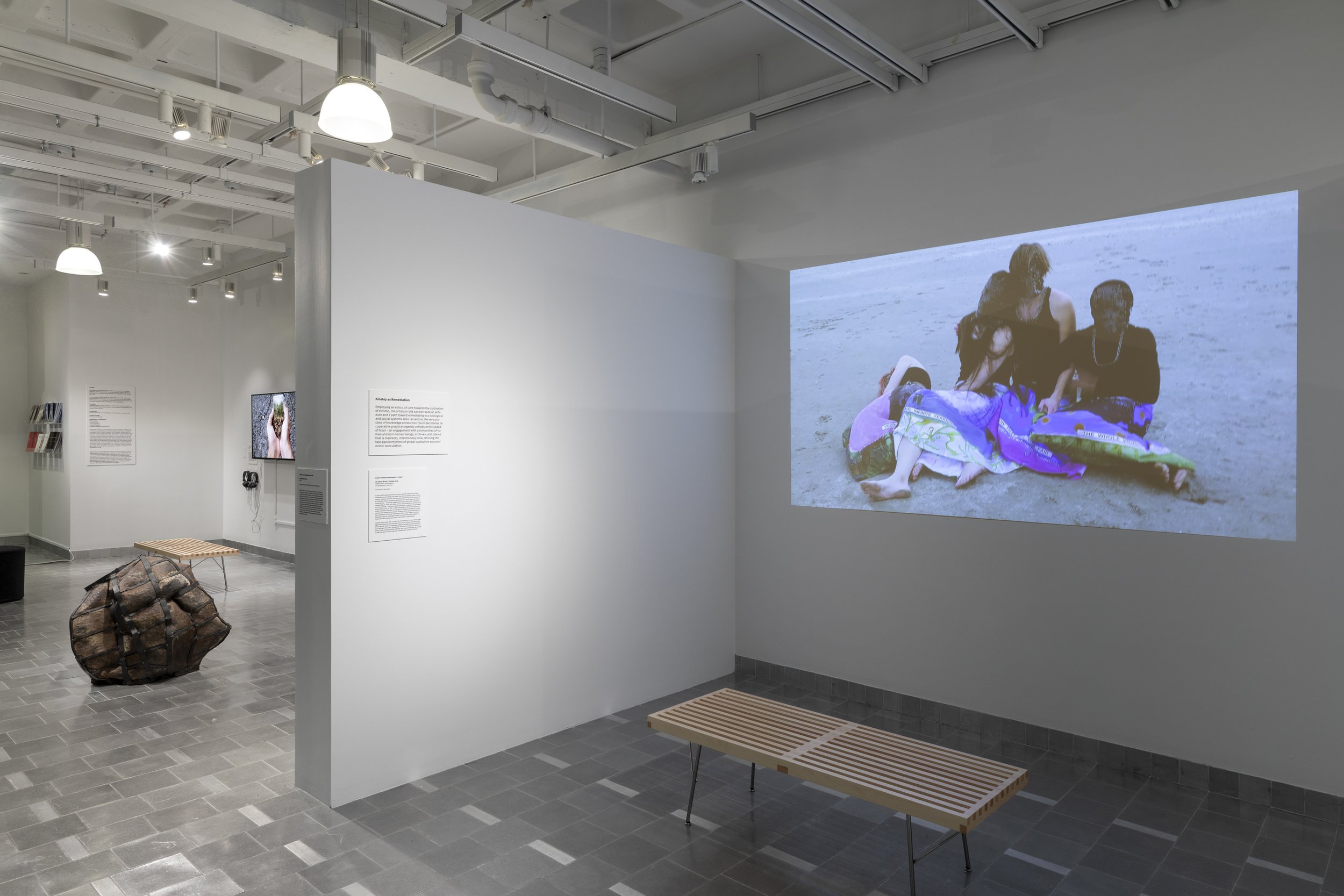
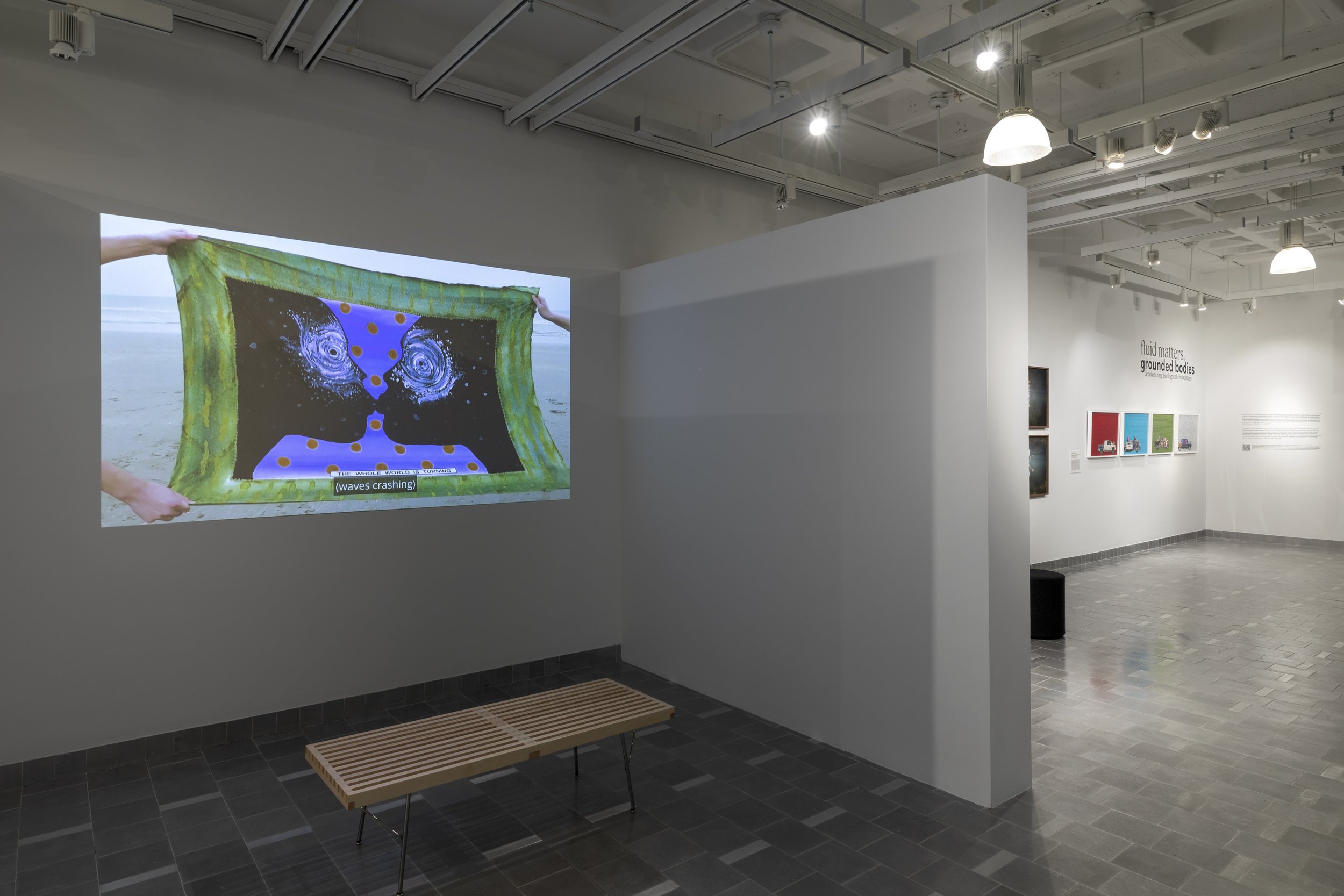
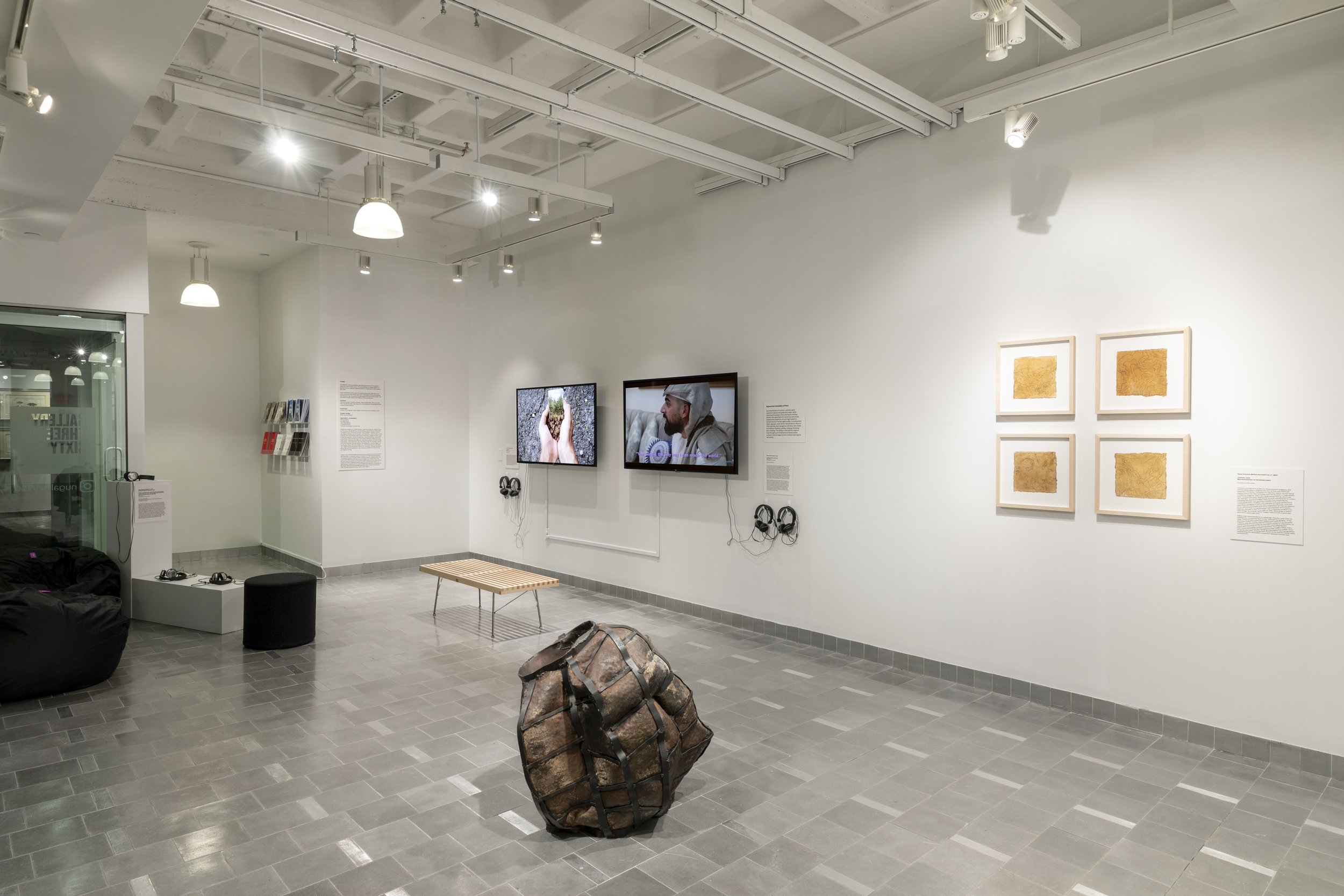
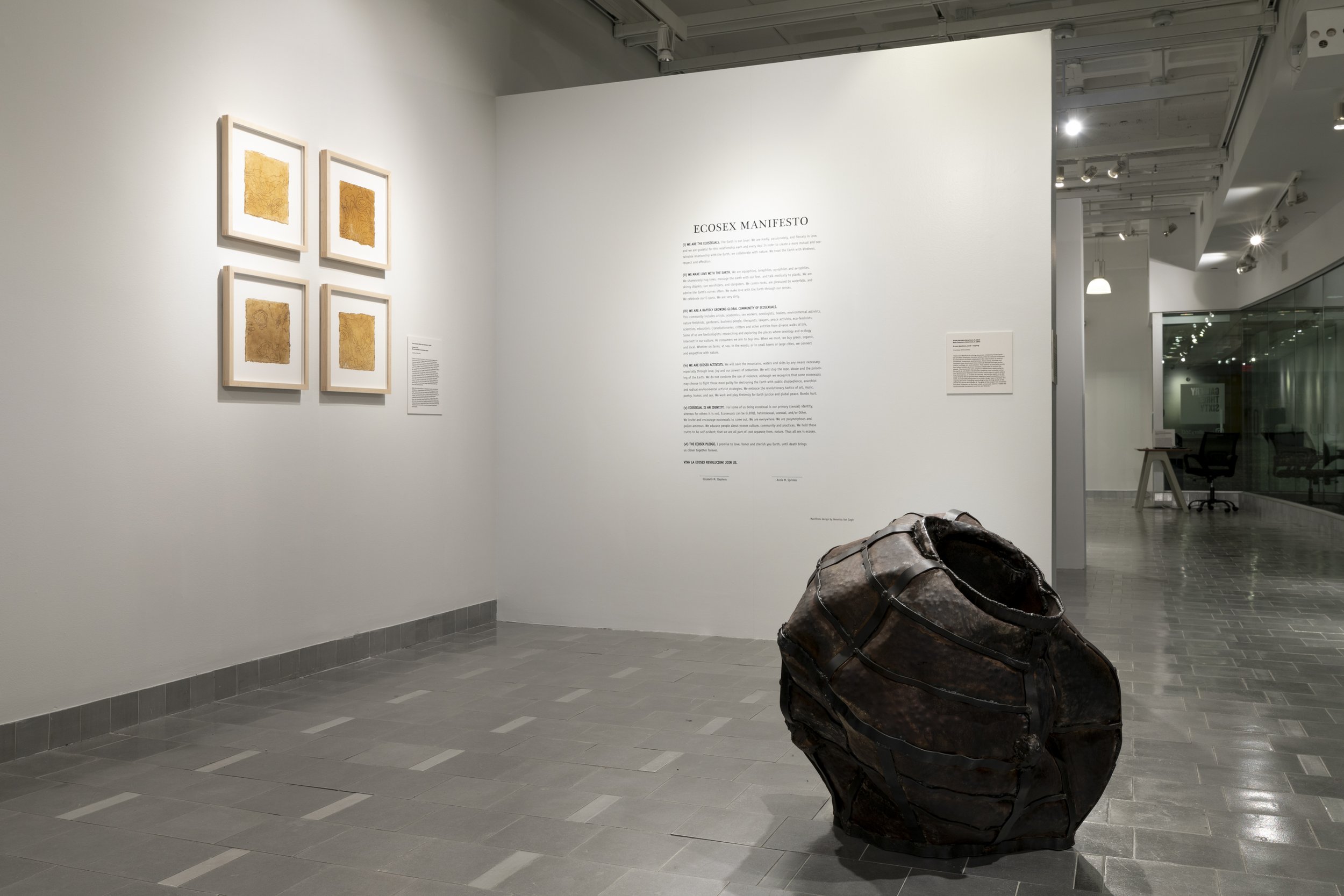
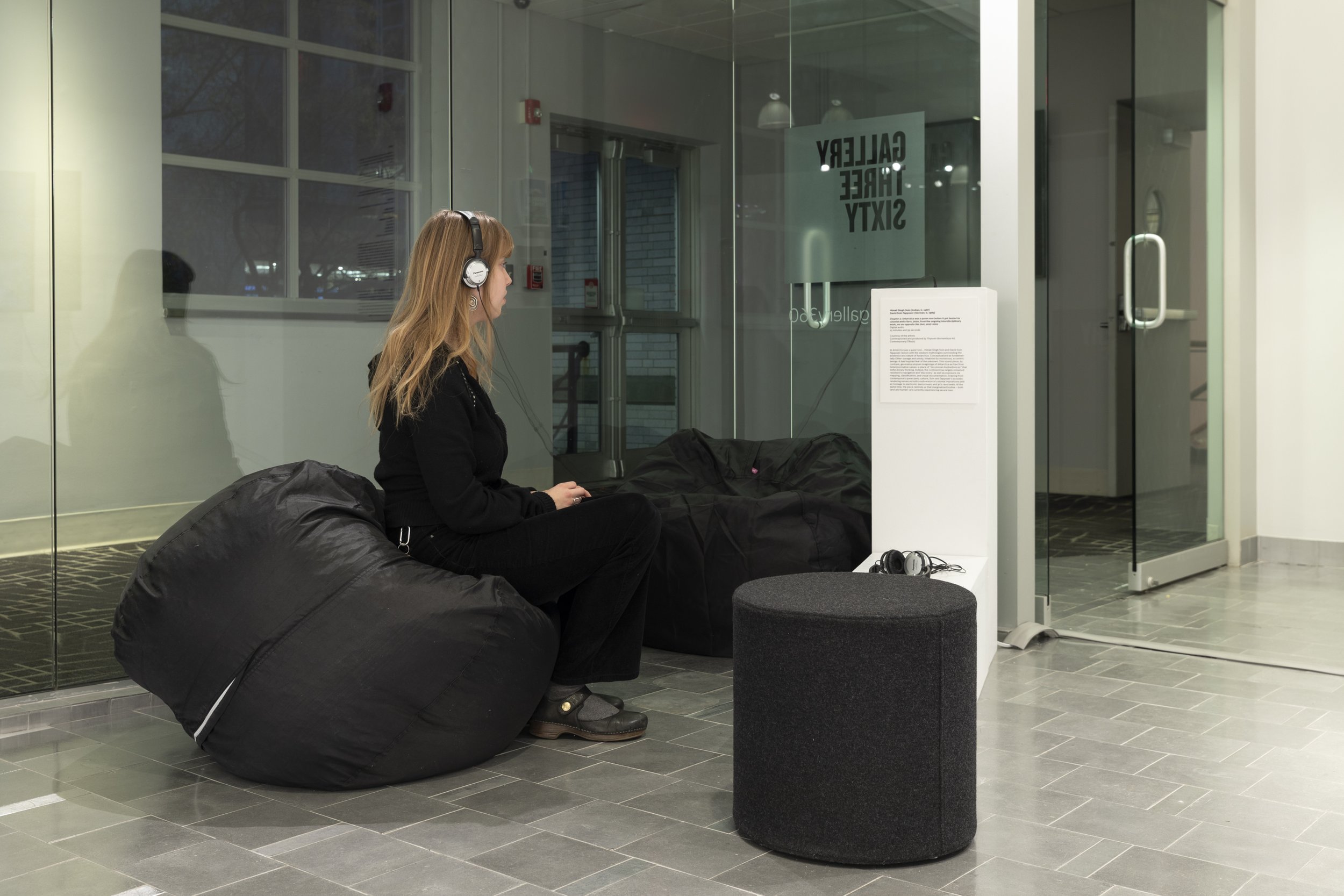
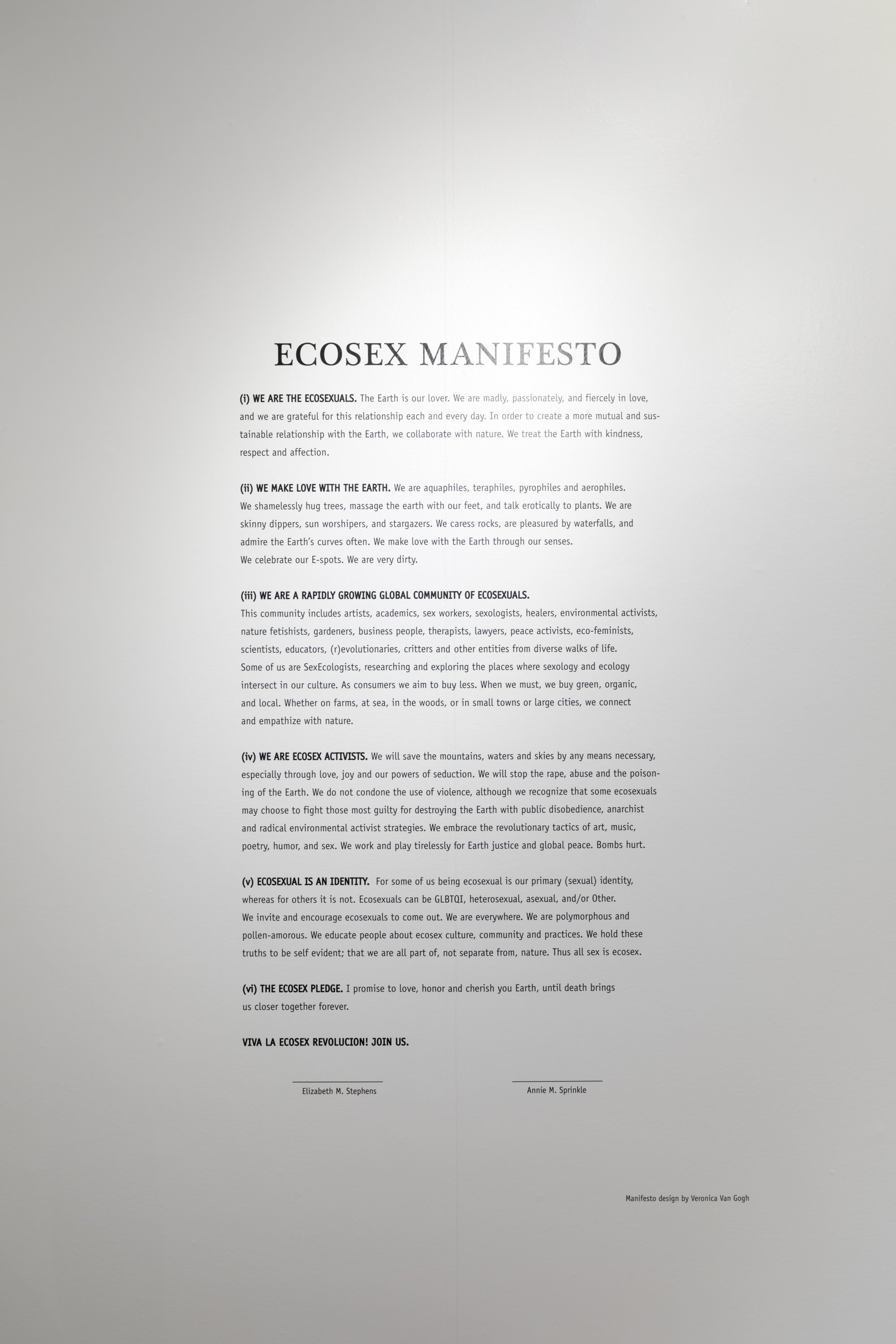
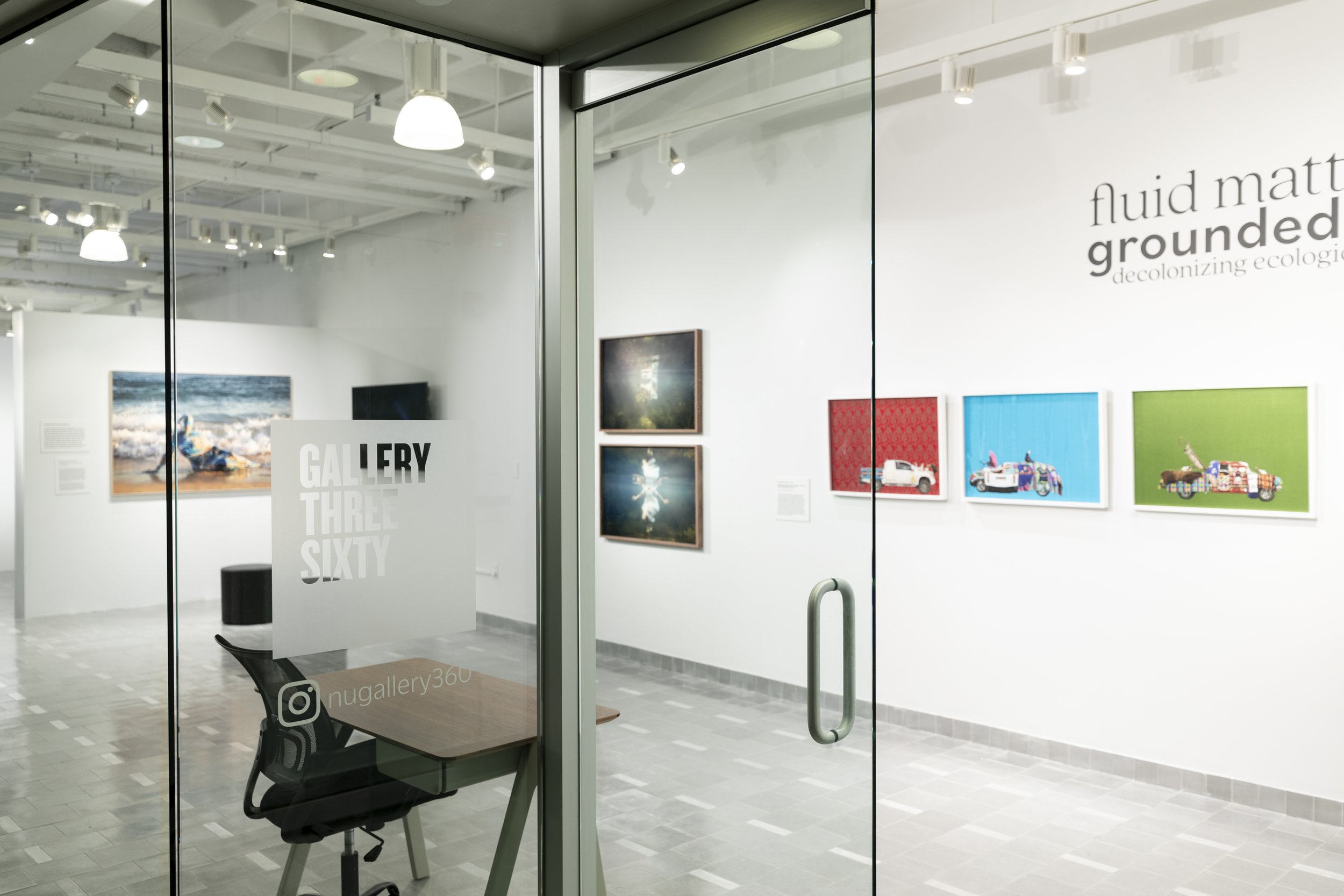
Artists: Farah Al Qasimi, Beatriz Cortez, micha cárdenas, Tessa Grundon, Allison Janae Hamilton, Joiri Minaya, Ada M. Patterson, Wendy Red Star, Himali Singh Soin, Annie Sprinkle, and Beth Stephens
Curatorial Team: Claudia Azalde, Cheyenne Bryant, Jasmine Buckley, Patricia Eunji Kim, Kaleah Mchawi, Ally Swanson, and Anastasia Tchaplyghine with Juliana Rowen Barton
Production: Evelyn O’Donoghue, Claire Ogden, and Olivia Olson-Roberts
Editors: Juliana Rowen Barton and Claire Ogden
Copy Editor: Deborah Kimmey
Design: Nina Osoria Ahmadi
Exhibition Photography: Mel Taing
Exhibition Designer: Ian Sullivan
July 22-August 17, 2022
The Gallatin Galleries
New York, New York
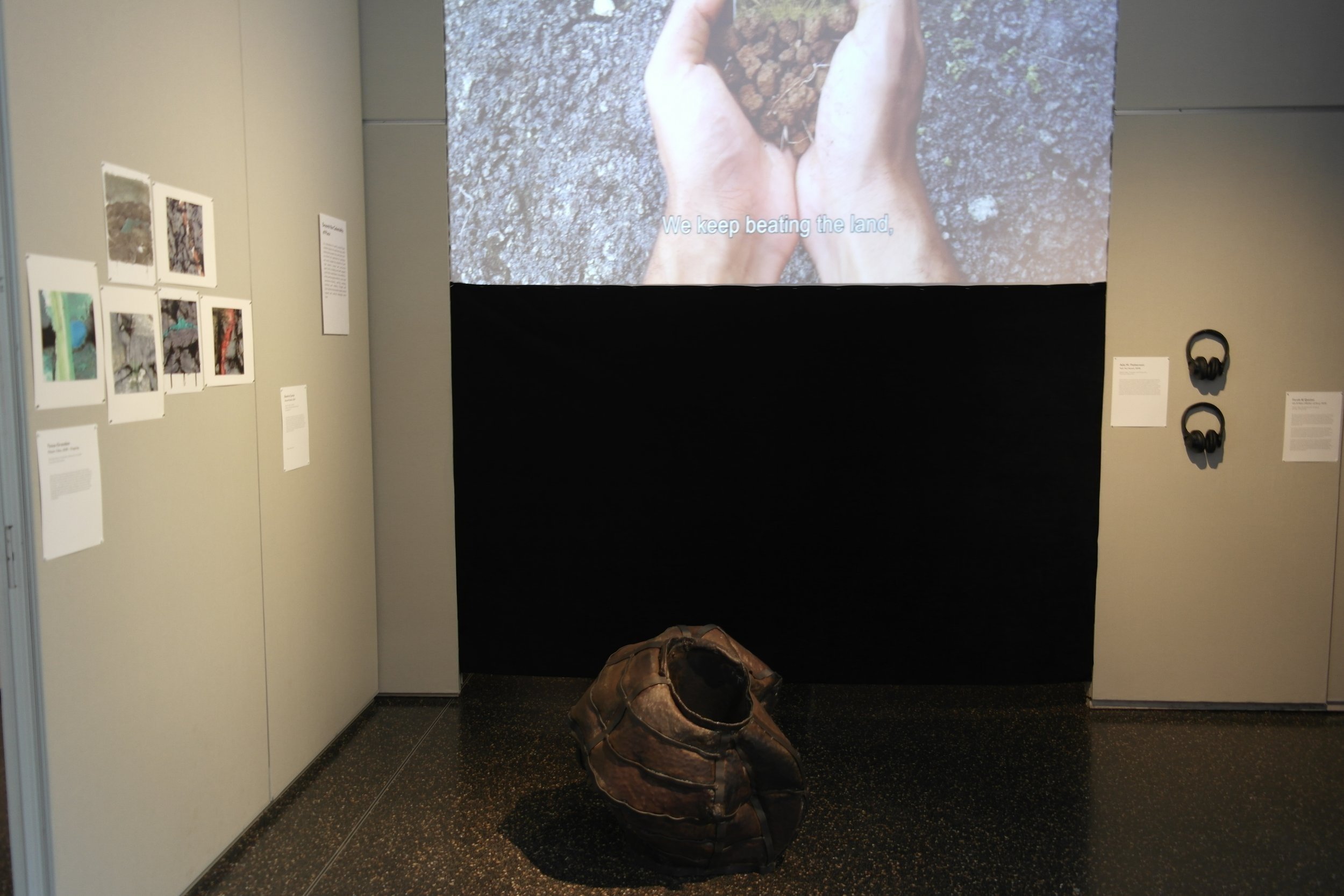
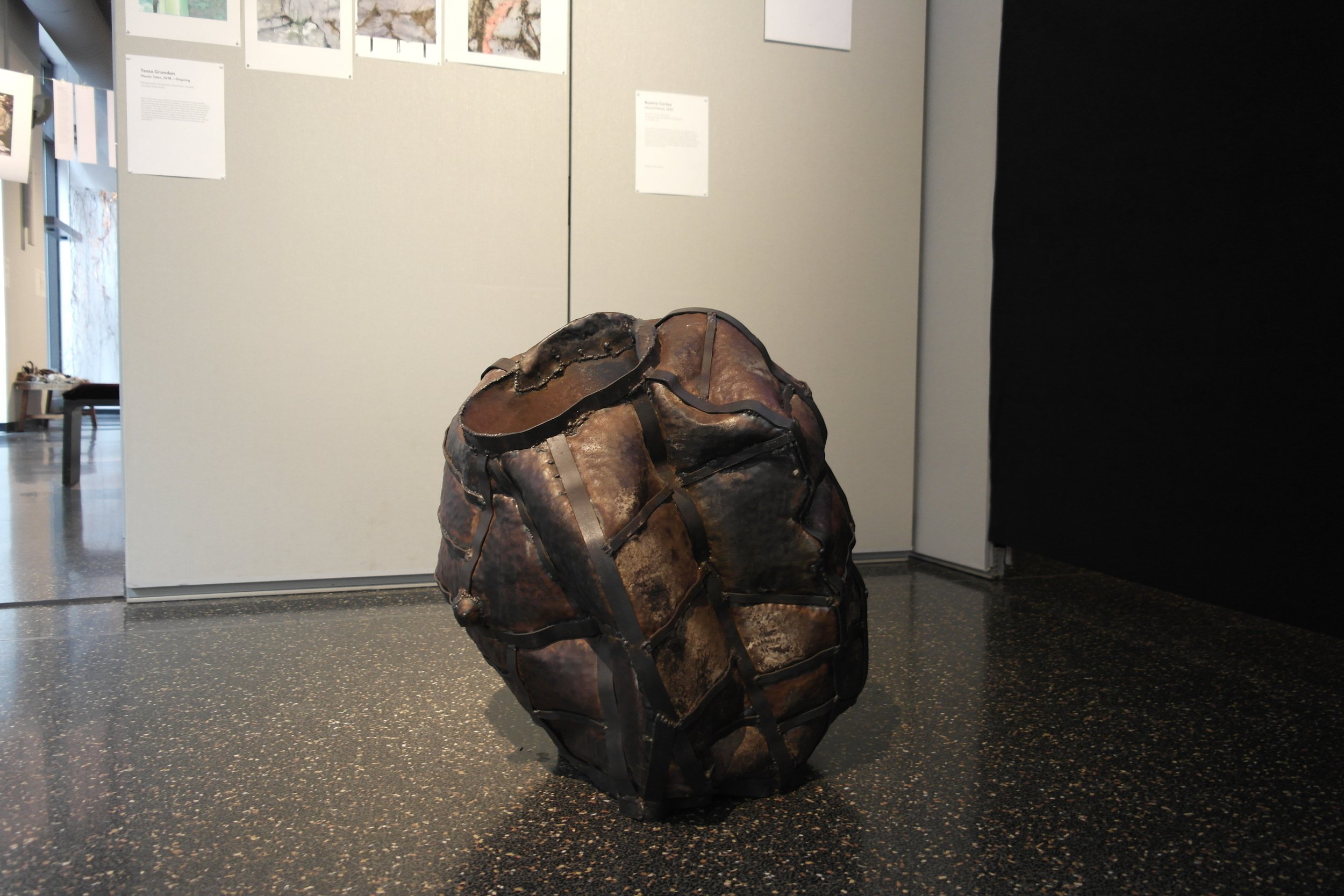
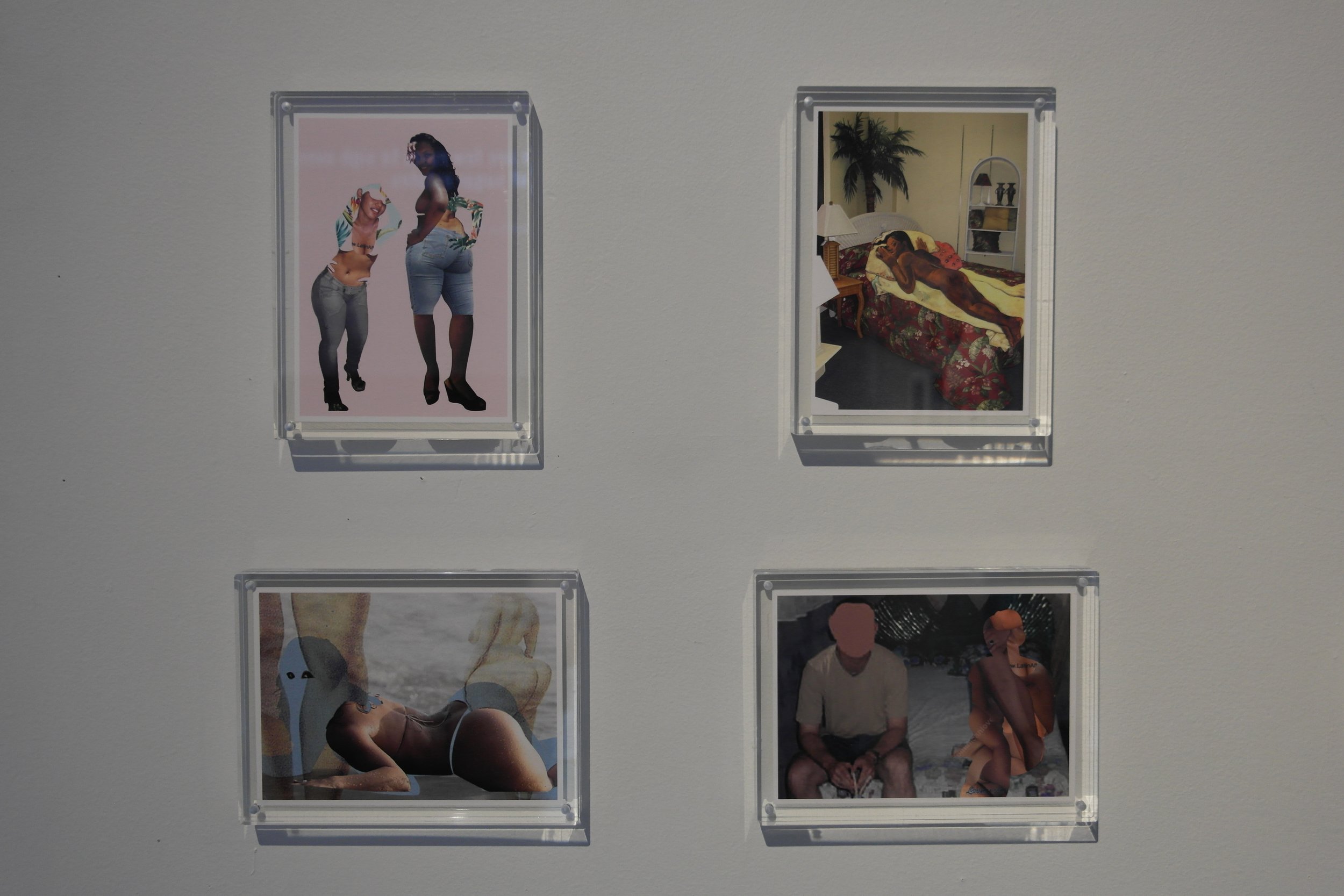
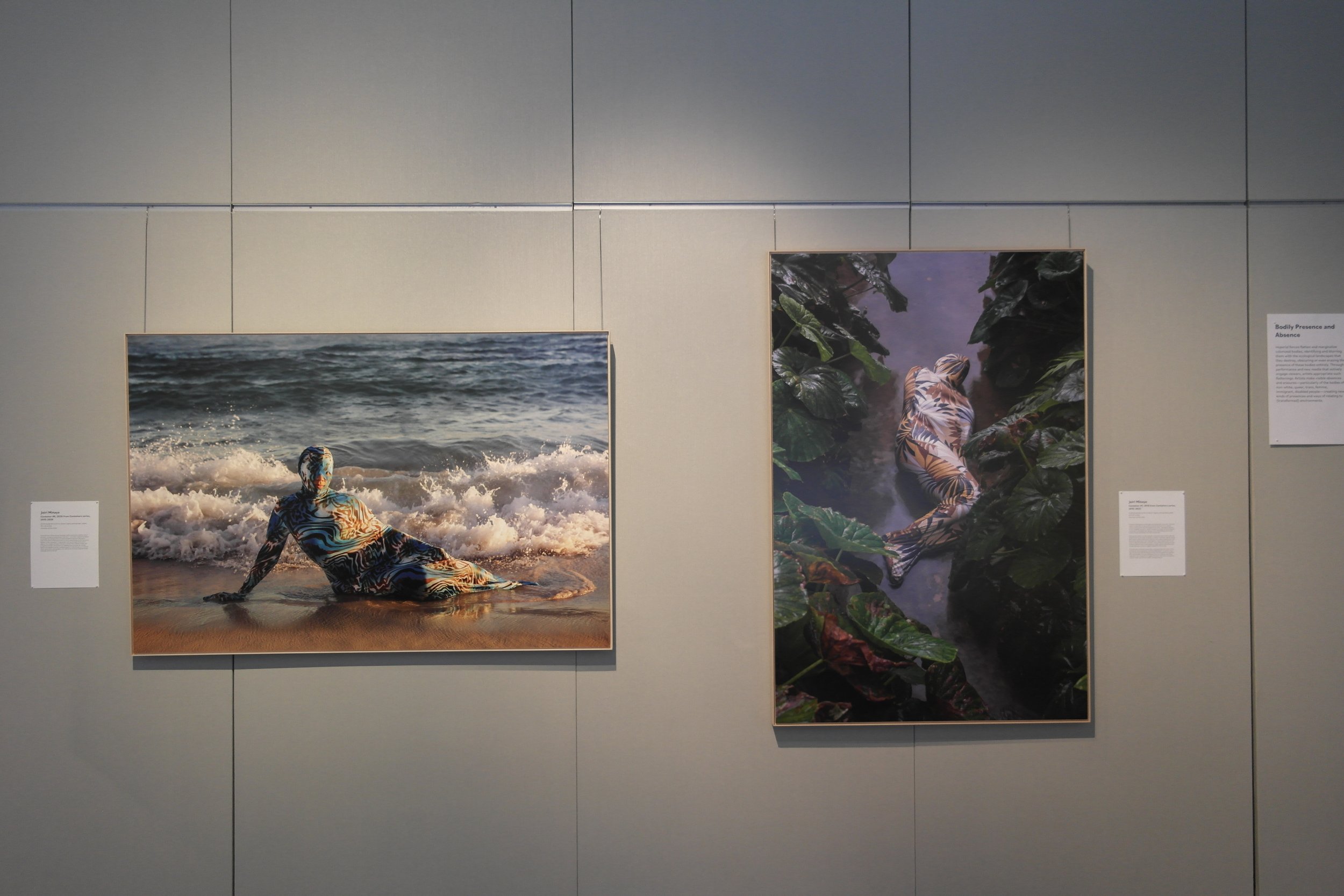


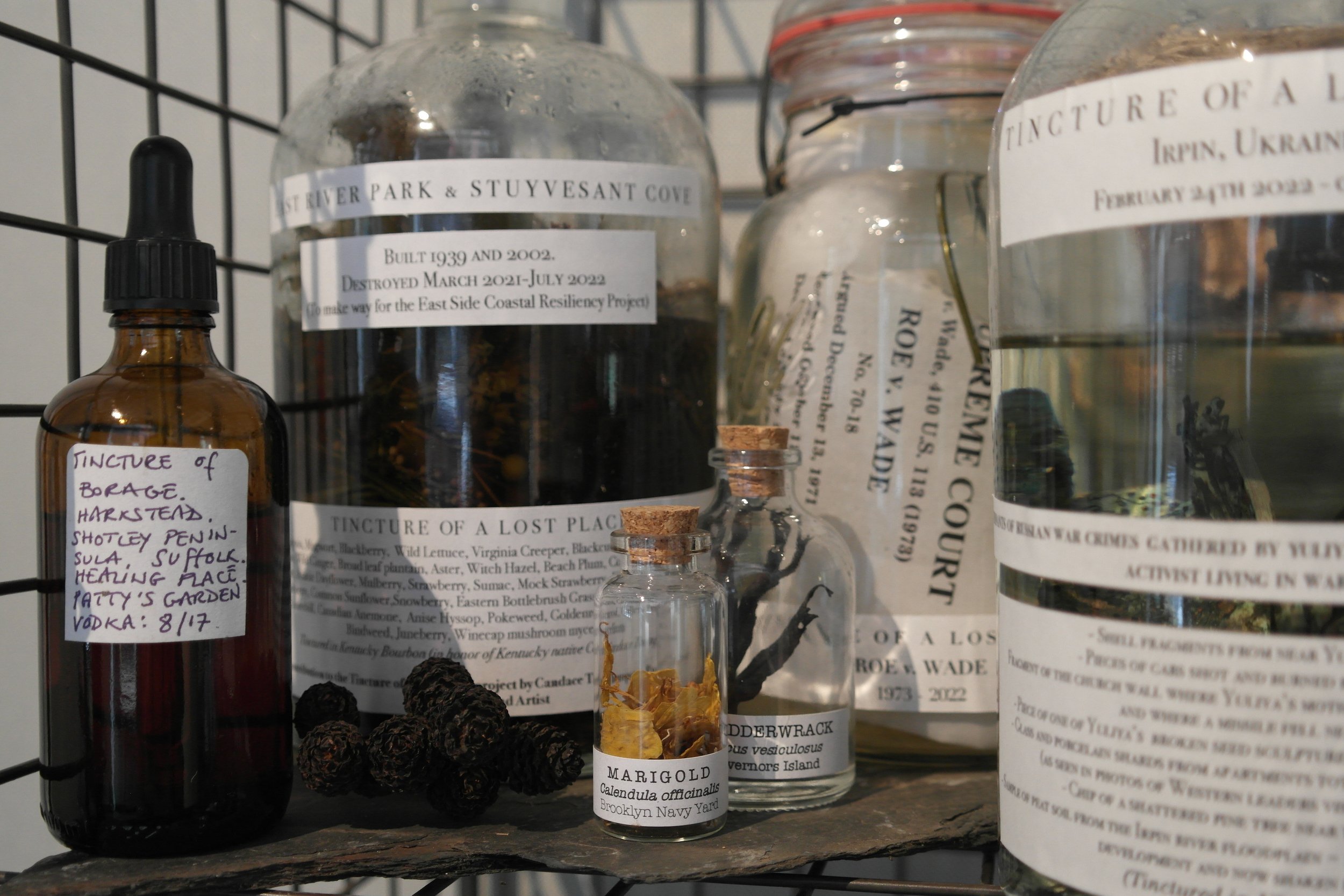
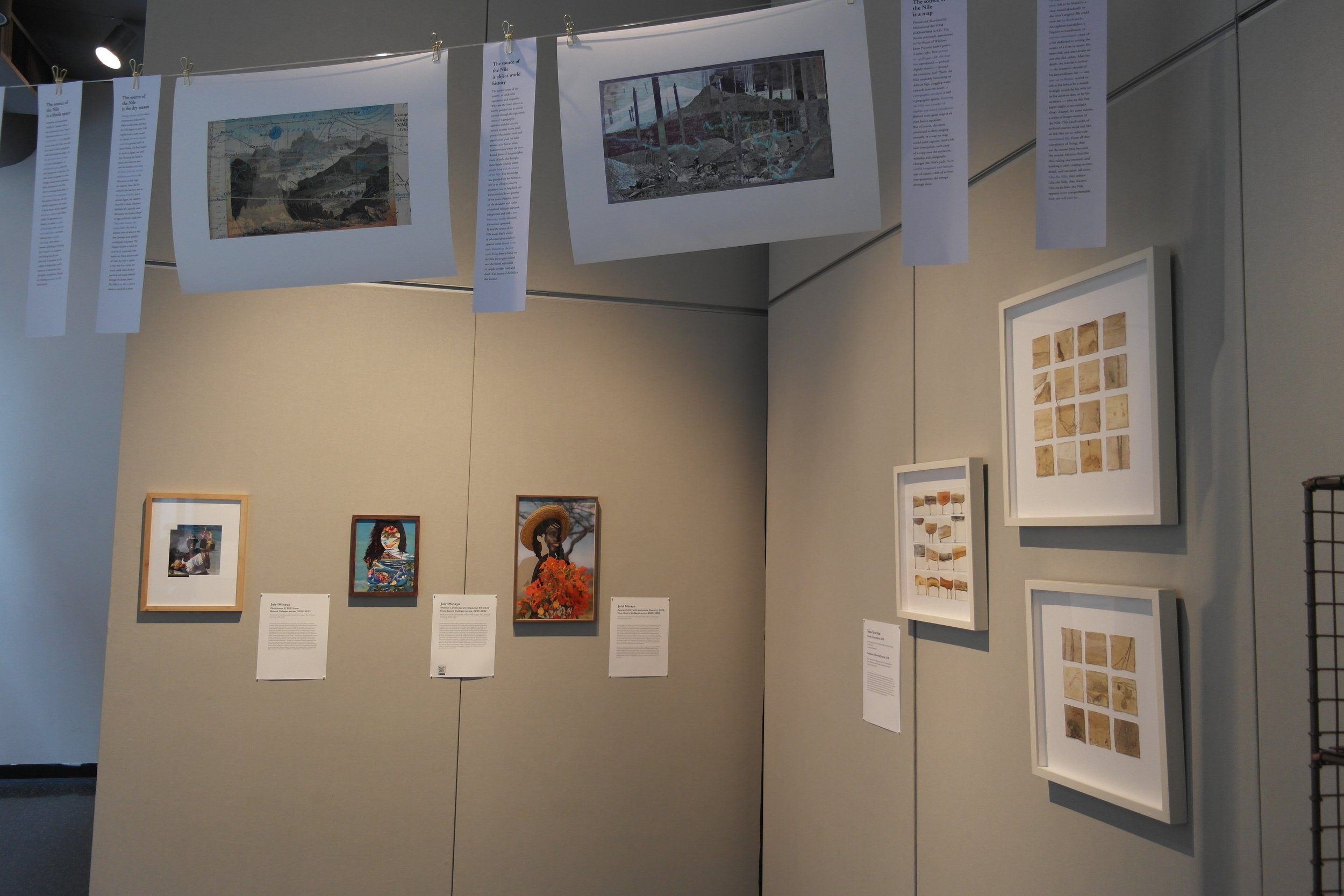
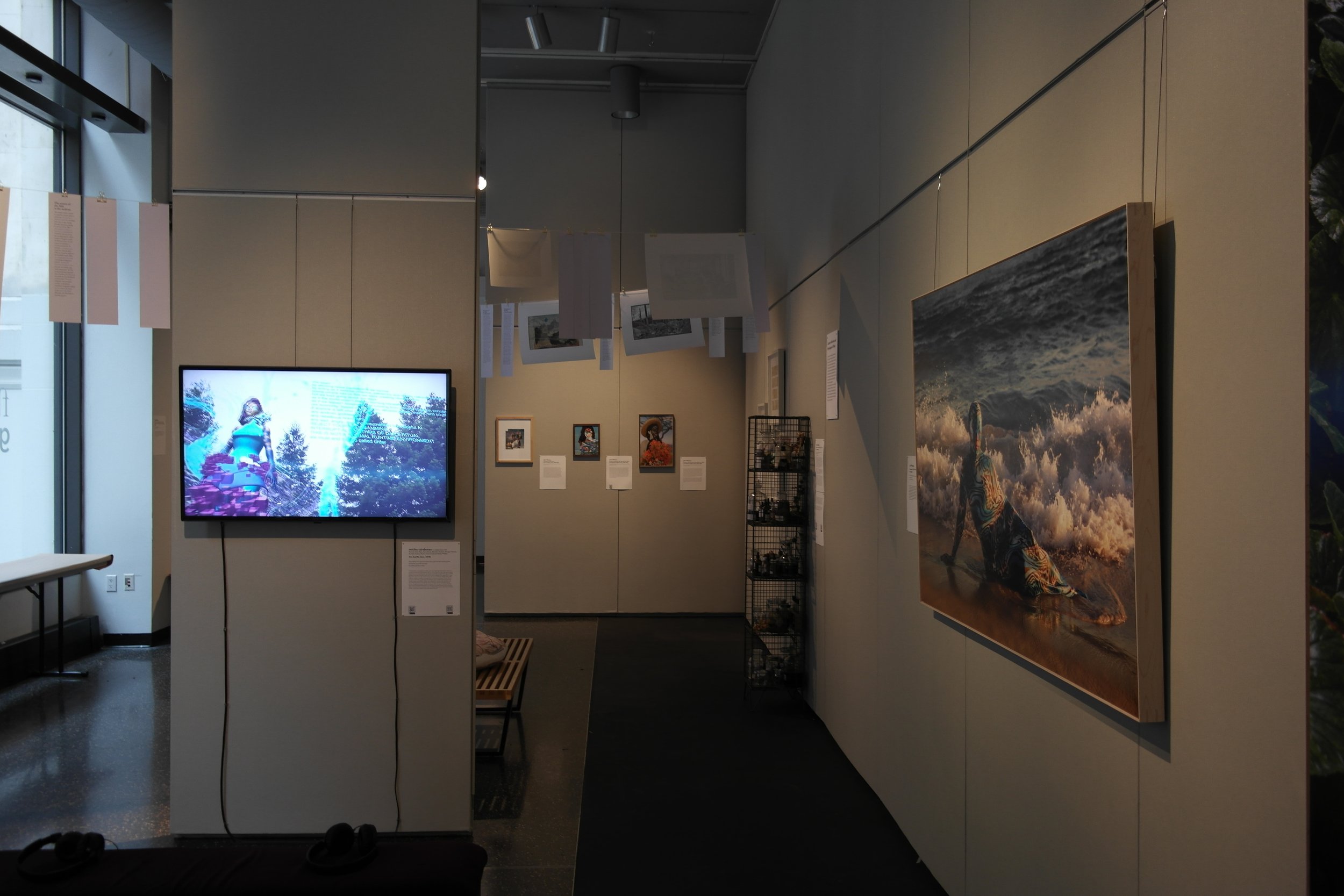
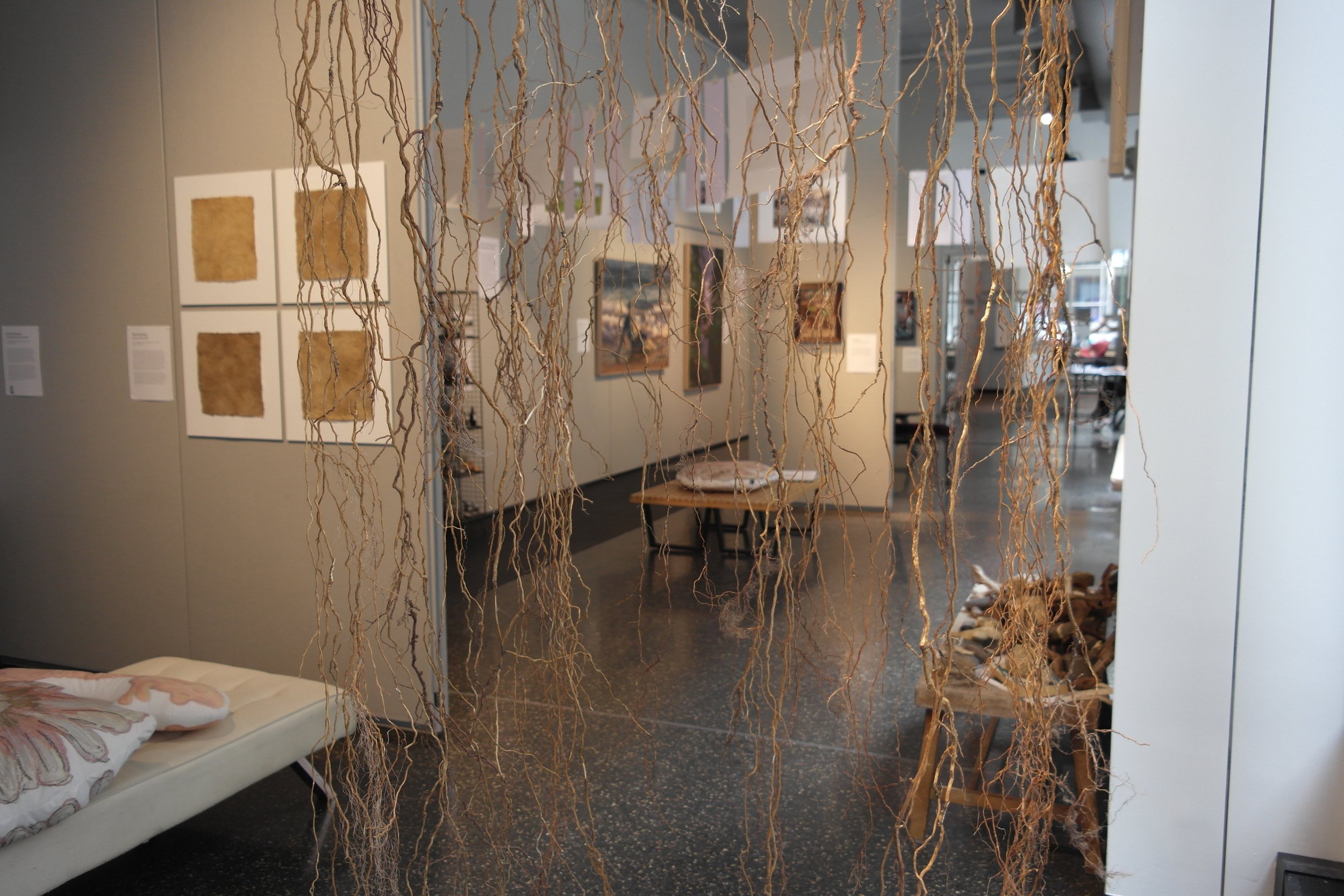
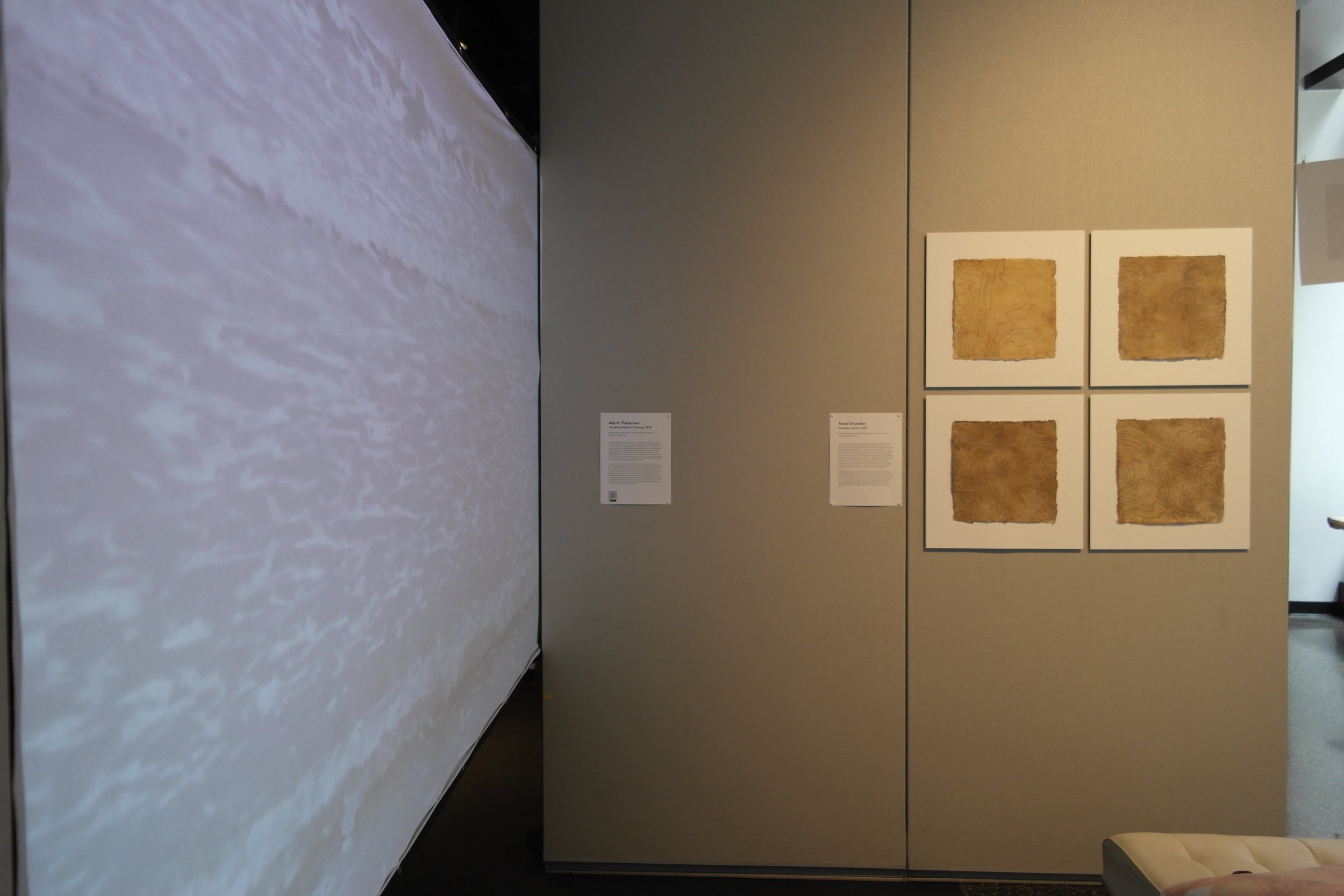
Artists: Farah Al Qasimi, Beatriz Cortez, micha cárdenas, Tessa Grundon, Joiri Minaya, Ada M. Patterson, Himali Singh Soin, and Alexis Rider
Curatorial Team: Anastasia Amrhein, Claudia Azalde, Cheyenne Bryant, Jasmine Buckley, Patricia Eunji Kim, Kaleah Mchawi, and Ally Swanson
Gallatin Galleries Production Team: Chase Adams, Nina Osoria Ahmadi, Jennifer Birge, Cheyenne Bryant, Jasmine Buckley, Traci Clapper, Glen Einbinder, Lewis Fender, Chloe Himmelman, Lillian Leopold, Karolina Ochoa-Montes, and Moon Warner
Exhibition Designer: Ian Sullivan
Design: Nina Osoria Ahmadi
Special Thanks to Susanne Wofford, Linda Wheeler Reiss, Gisela Humphreys, Keith Miller, Sarah Binney, KC Trommer, Rachel Plutzer, Cat Feliciano, Theresa Anderson, Traci Clapper, and Jennifer Birge
SHAPING THE PAST (2021-2022)
Organizer and Curator
Shaping the Past is a platform for transnational memory culture at the intersection of art, history, and justice. Based around the Monument Lab Fellows program, the exhibition features eighteen artists, activists, and collectives from North America and Germany to broaden understandings and illuminate ongoing memory interventions that reimagine civil society around the world. Shaping the Past draws together powerful local grassroots projects in order to build connections and patterns across borders that constitute a transnational memory culture at work to address systemic racism and sexism, social and economic exclusion, and legacies of colonial and state violence. The projects and exchanges between participants offer innovative and reparative models that highlight creative changemakers who are actively shaping the past and our paths forward.
The collaborative initiative consists of three landmark elements: a major public conference that will take place during Monument Lab’s annual Town Hall (October 8-10, 2020); a multi-site exhibition curated by Monument Lab and presented by Goethe-Institut North America and bpb with local programming organized by Goethe-Instituts throughout North America (2021); and a multilingual book that documents the transnational conversations around public memory as envisioned by the artists, activists, and their collaborators, co-edited by Monument Lab’s Paul M. Farber and Patricia Eunji Kim.
Shaping the Past is a partnership between Monument Lab, the Goethe-Institut, and the Bundeszentrale für politische Bildung (German Federal Agency for Civic Education/bpb) that addresses pressing issues around what, whom, and how to remember in public spaces.
Works by Hadi Al Khatib, Ulf Aminde, Kanyinsola Anifowoshe, Tomie Arai, Arielle Brown, Sergio Beltrán-García, Zyahna Bryant, Cheyenne Concepcion, Free Egunfemi Bangura, Thalia Fernández Bustamante, Joel Garcia , A Long Walk Home’s Girl/Friends (Anaya Patrice Frazier, Danielle Nolen, Aliyah Young), MADAD (Mallory Nezam, Damon Davis, and De Nichols), Ada Pinkston, Take Action Chapel Hill (Maya Little, Gina Balamucki, and Annie Simpson), Quentin VerCetty, Patricks Weems, and Alisha B. Wormsley.
Exhibited in Boston, Kansas City, Los Angeles, Washington, D.C., Mexico City, New York City, Seattle, San Francisco, Montreal, Houston, and Chicago.
DATE/UM: Ecological Temporalities Across the Schuylkill River (2016-2017)
Lead Curator
Philadelphia, PA
Philadelphia’s post-industrial landscape serves as backdrop and as actant in the broader conversations around ecological temporalities. A timescale is intrinsically ecological in that different networks, communities, and types of information shape how we experience, understand, and know a place and its temporalities. Along with the conference’s three days of transdisciplinary conversations, films, and performances, this archive-as-mobile installation features collaborations and interventions developed by a growing corps of academics, activists, artists, and communities in and along the Lower Schuylkill River (LSR).
Through the installation, we explore the problem of data, and the date as one kind of datum. A datum functions as a unique measurement of observations, qualities, or trends, while a date performs the task of marking out and defining time through specific, quantifiable means. In the context of the LSR, data/dates are embedded into a watery, industrial landscape and used to describe the various human and nonhuman communities that the river hosts. In what ways, this installation asks, are the timescales of various kinds of river data in/commensurable?
Locations
Kislak Center for Special Collections, Rare Books and Manuscripts, Penn Libraries, Philadelphia, PA. October 20-26, 2016.
Penn Annenberg Center for the Performing Arts, Philadelphia, PA. January 13-February 9, 2017
WHYY Headquarters, Philadelphia, PA. March 6, 2017
Press:
"Art installation interprets water pollution with sound," StateImpactPA, NPR, January 17, 2017.
"Art and data marry to illuminate stories of life on the Schuylkill River," NewsWorks, March 3, 2017.
Bethany Wiggin, "Forgotten Places and Radical Hope on Philadelphia's Tidal Schuylkill River." Open Rivers, Issue 6, Spring 2017.
CULTURES IN THE CROSSFIRE: STORIES FROM SYRIA AND IRAQ (2017-2018)
Researcher and Curatorial Team
Penn Museum
Philadelphia, PA
Cultures in the Crossfire draws attention to the loss and resilience of cultural heritage in the context of war in modern-day Syria and Iraq by bringing together two major points of discussion. First, the art and artifacts from Syria and Iraq demonstrate the richness and resilience of the region’s diverse communities through time. Second, the exhibition draws attention to the violent political conflicts, loss of life, and destruction of cultural heritage in the Middle East today. Cultural heritage, broadly defined, includes important objects, monuments, sites, places, and landscapes, to practices, traditions, and oral histories.
Organized around four themes—identities, knowledge, lives, and movement—texts and objects from Syria and Iraq are displayed alongside multi-media installations by Syrian-British artist Issam Kourbaj, whose works consider themes of war, loss, identity, and resilience. This exhibition aims to foster for the audience awareness and new perspectives on war and violence, and the vital and precarious role of visual culture and archaeology.
The exhibition also aims for visitors to understand how Penn Museum and other stakeholders are helping to prevent the destruction of people’s lives, communities, and cultural heritage.
THE GOLDEN AGE OF KING MIDAS (2016)
Researcher and Curatorial Team
Penn Museum
Philadelphia, PA
The Golden Age of King Midas was an international exhibition that grew out of a Penn graduate seminar. It offers a rich history of Penn's excavations since 1950, while showcasing finds from the site, from mosaics and paintings, to metal, luxury vessels and jewelry, to coins and sealings, to architectural fragments and its spectacular burial mounds of tumuli. The exhibition not only shares the finds and history of Gordion, but also tells of its international and cross-cultural interactions with other kingdoms and city states (Assyria, Persia, Lydia, Urartu, Greece, and the Neo-Hittite cities of North Syria).
Learn More
"Curatorial Seminar Students and the Golden Age of King Midas," Penn Museum.
In Search of King Midas, Expedition Magazine Volume 57/ ssue 3.
The Golden Age of King Midas, eds. C.B. Rose and G. Darbyshire, Philadelphia: Penn Press, 2016.
Sex: A History in 30 Objects (2015-2016)
Assistant Curator
Penn Museum, Philadelphia
In conjunction with the Penn Humanities Forum on Sex, the Penn Museum featured thirty different objects from its collection that demonstrated the diverse ways that humans in the past and present have understood sex and sexuality. The exhibition explored themes including Love and Sex; Beauty, Desire, and Attraction; Religion and Sex; Gender Diversity, Gender and Society; and Initiation and Ceremony. Objects came from different areas of the world, including ancient Iran, Greece, Rome, New Guinea, Egypt, Sierra Leone, India, Tibet, and North America.


